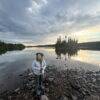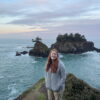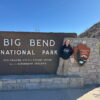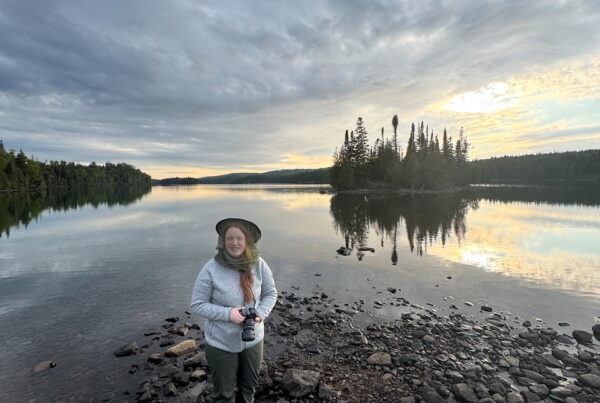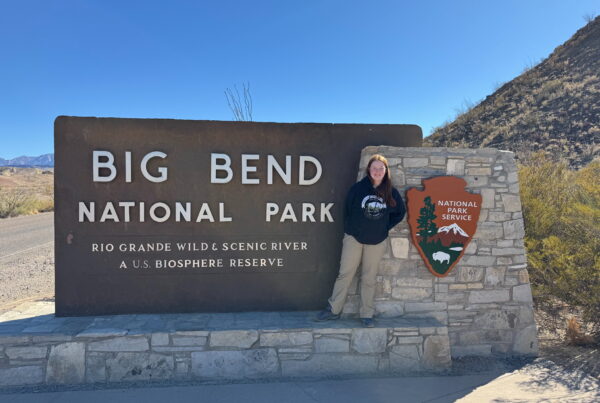In the summer of 2024, our big adventure took us to Lake Clark and Katmai National Parks in Alaska. This time, Cat joined Cameron and me on the trip. Having already visited three national parks the previous summer, we were eager to explore the Alaskan backcountry. As an added bonus, our good friend Andrew and his two sons would be joining us for the main part of the adventure.

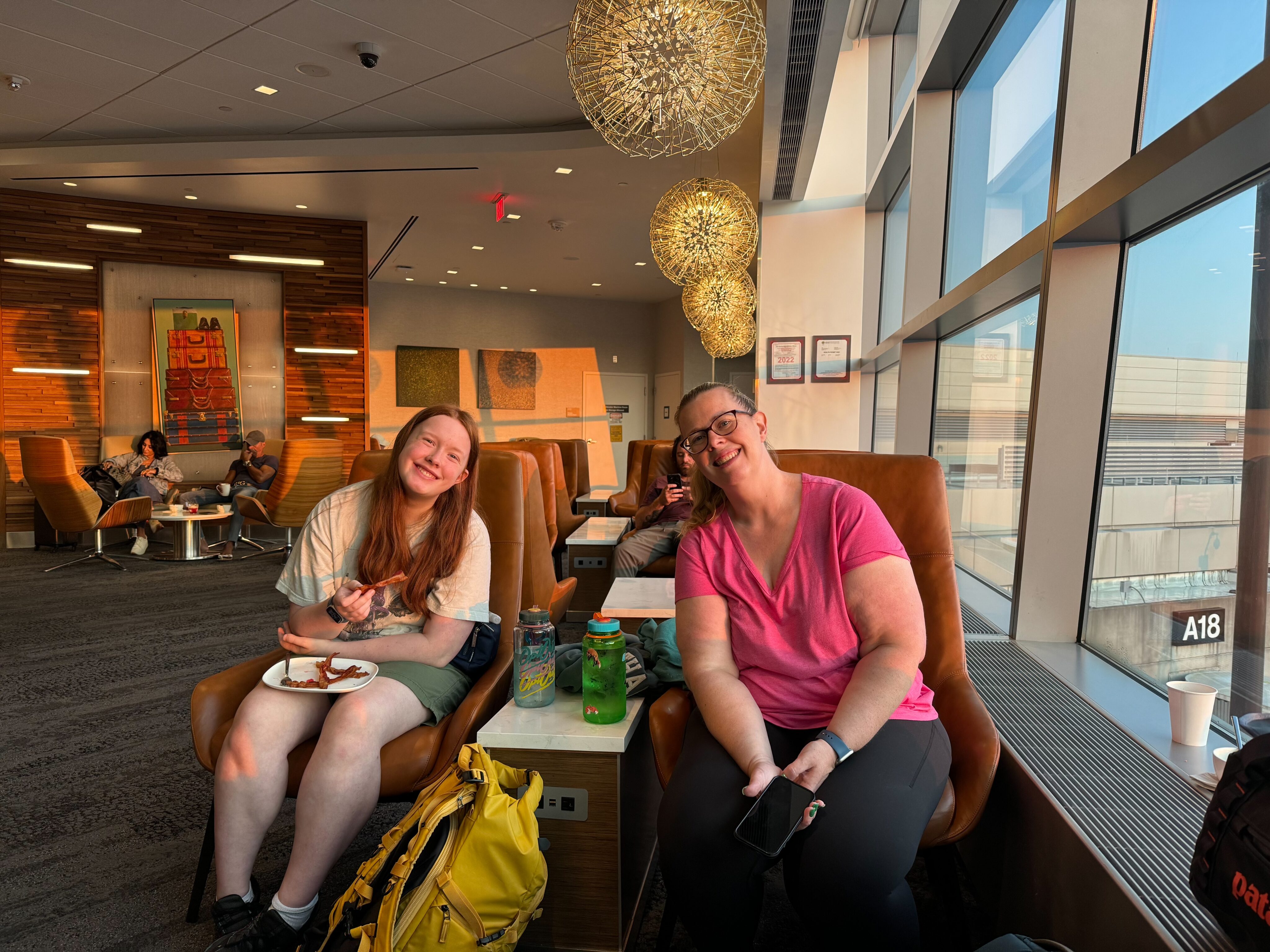
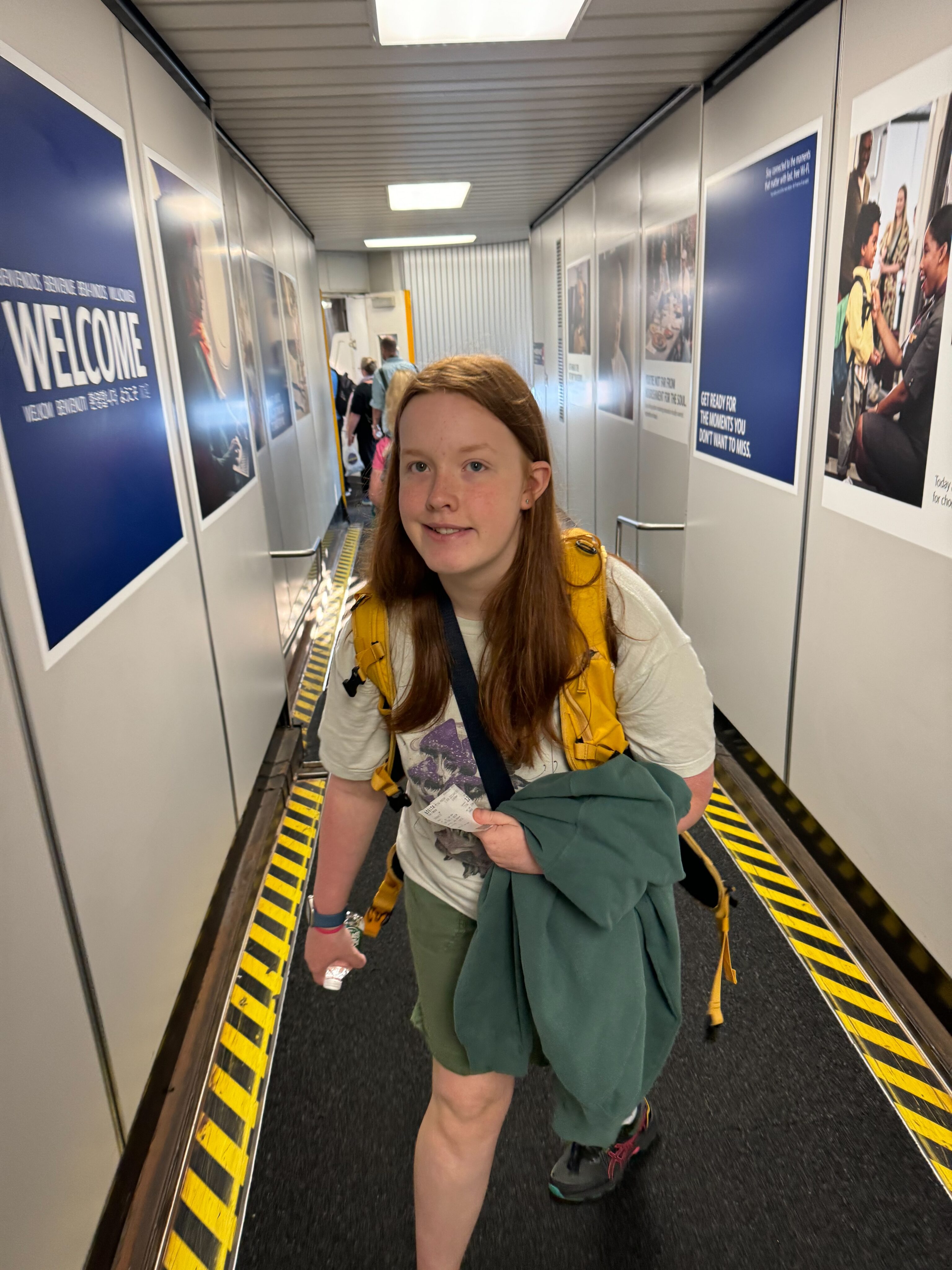
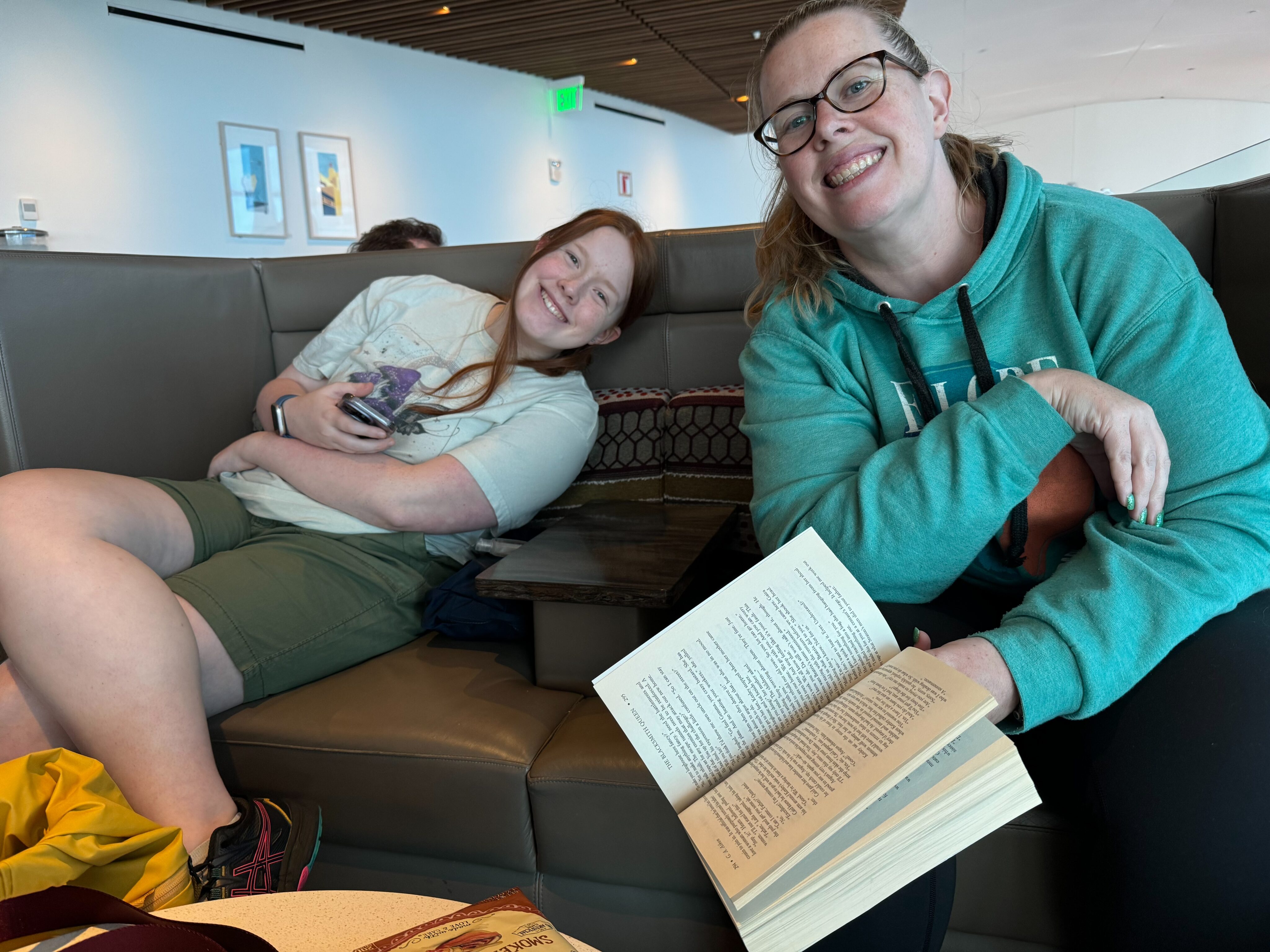
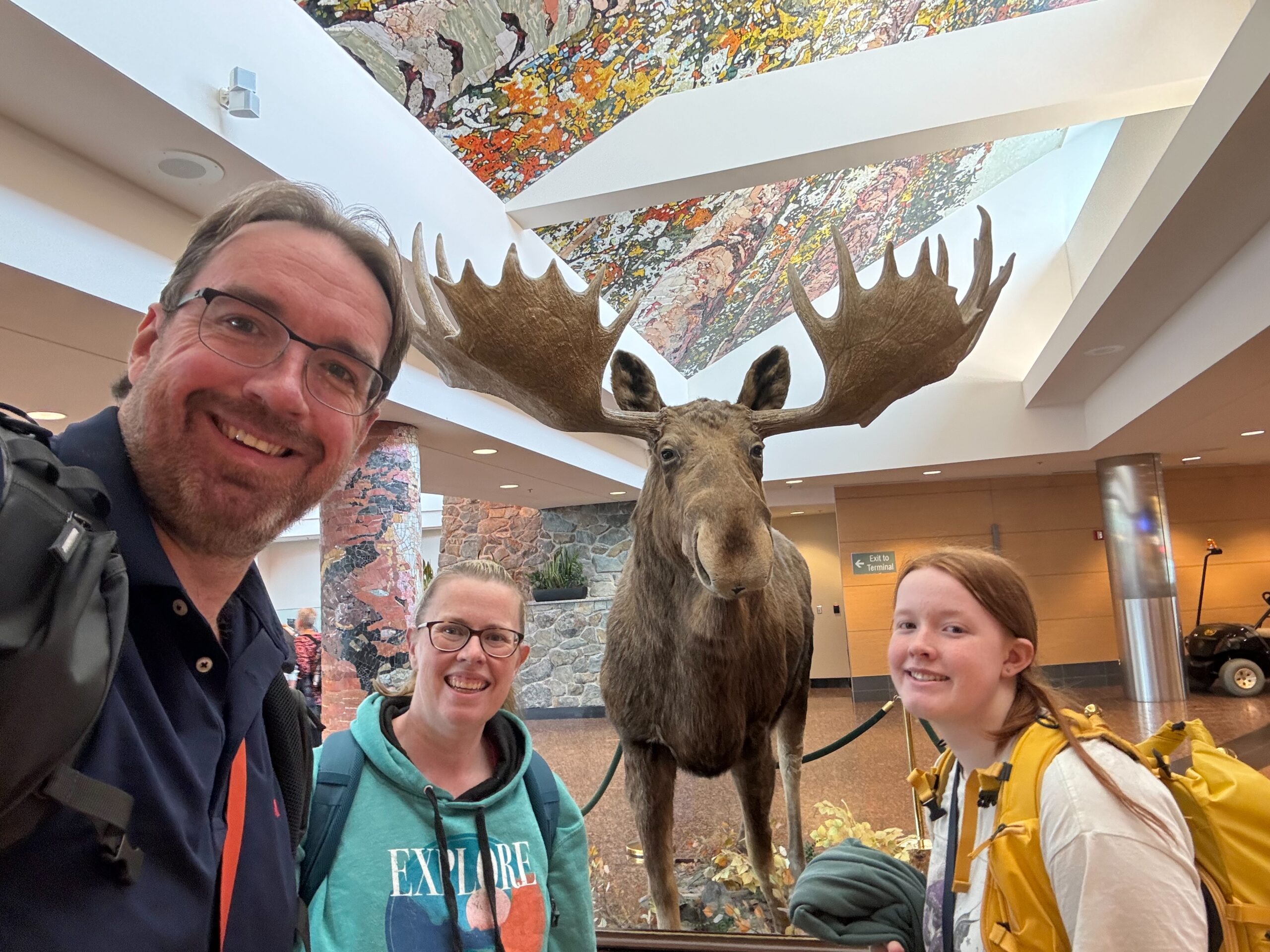
We planned our trip for mid-August, knowing that the salmon would be running in full force in Katmai, increasing our chances of seeing bears. August also promised cooler weather, which we hoped would help keep the mosquitoes at bay.
Anchorage & Kenai Fjords
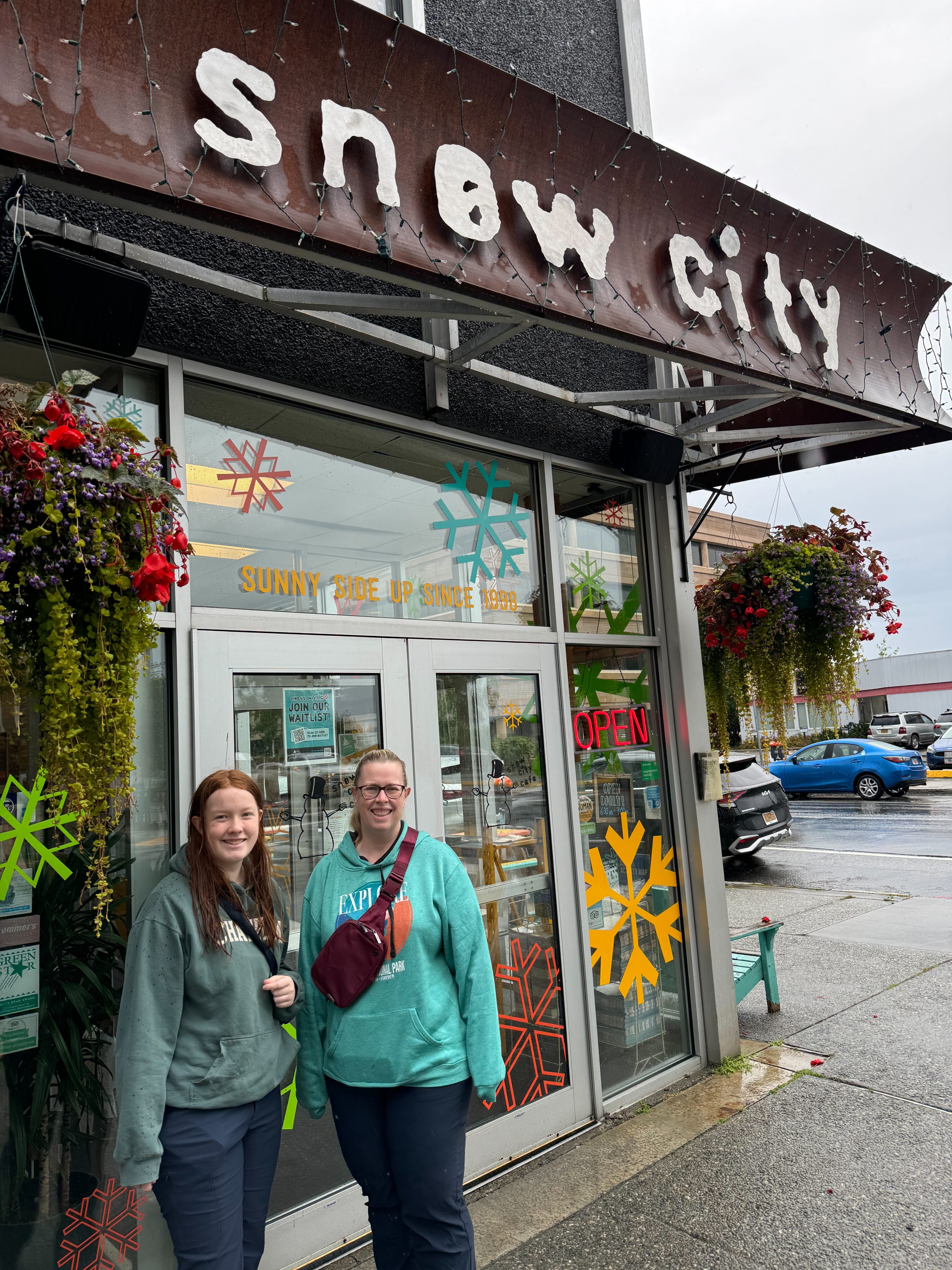
We arrived in Anchorage a few days before heading into the wilderness. This gave us time to explore other parts of Alaska and provided a buffer in case anything went wrong with our travel plans. We spent two nights in Anchorage, and while Cami and I had been there the year before, this was Cat’s first time in the state. On our second day, we took a road trip to Kenai Fjords National Park, a place Cami and I had enjoyed previously. The drive is only a few hours from Anchorage, and the scenery along the way is breathtaking.
Before we left, we had one of the best breakfasts I’ve ever had in Alaska. Snow City Café, located in the heart of downtown Anchorage, is a must-visit. The food is exceptional, and the staff and atmosphere are equally delightful. Cat’s favorite was the reindeer sausage omelet and Cami had a hot chocolate piled high with whipped cream and sprinkles to go with her chocolate chip pancakes. We took one of their gigantic cinnamon rolls to-go which Cami enjoyed later back at the hotel.
In Kenai Fjords, we visited Exit Glacier, its visitor center where we got to see a Bald Eagle fishing for its lunch, and some nearby attractions. We drove into the small fishing town of Seward for lunch before heading back to Anchorage as the weather turned.

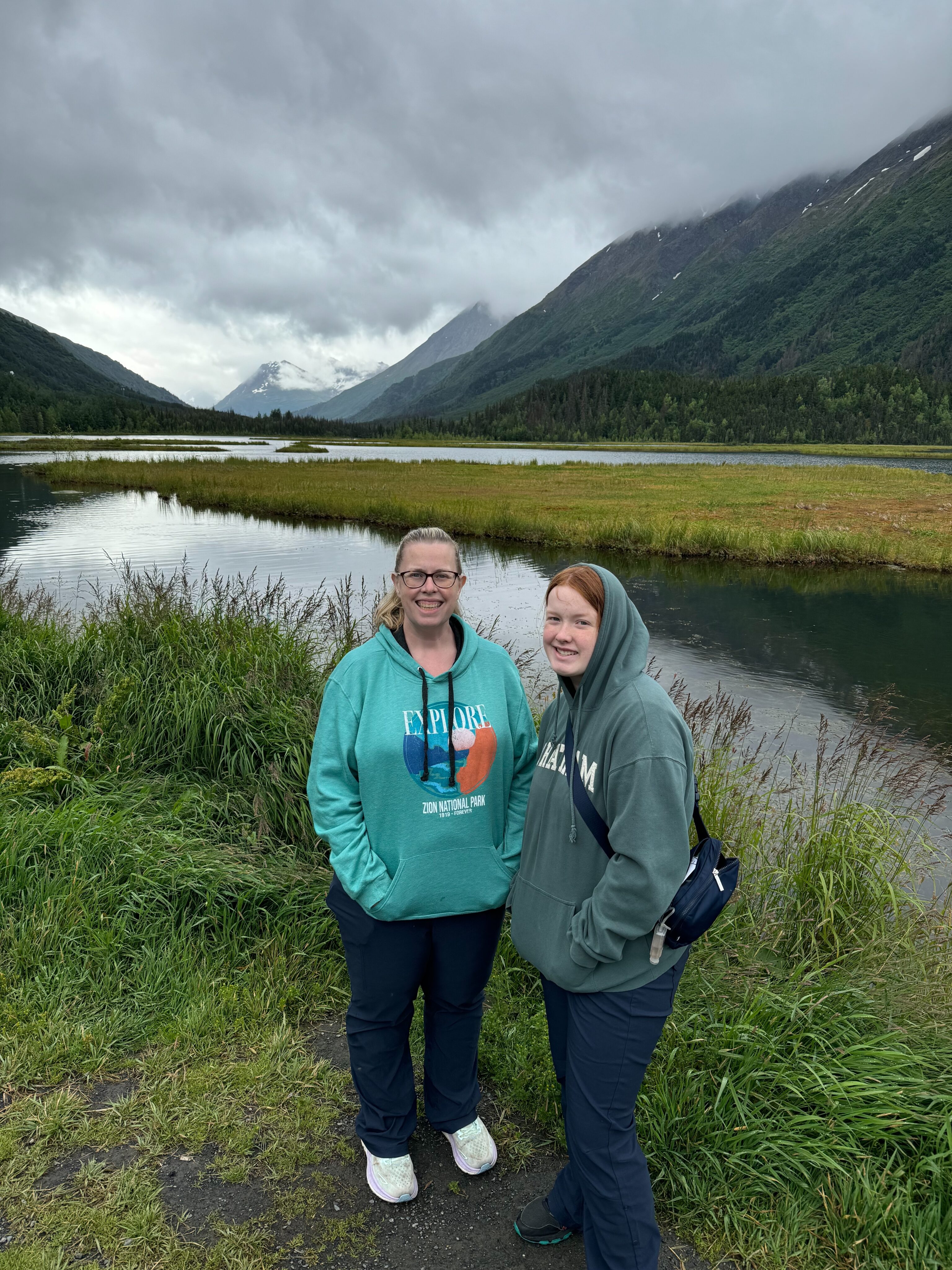
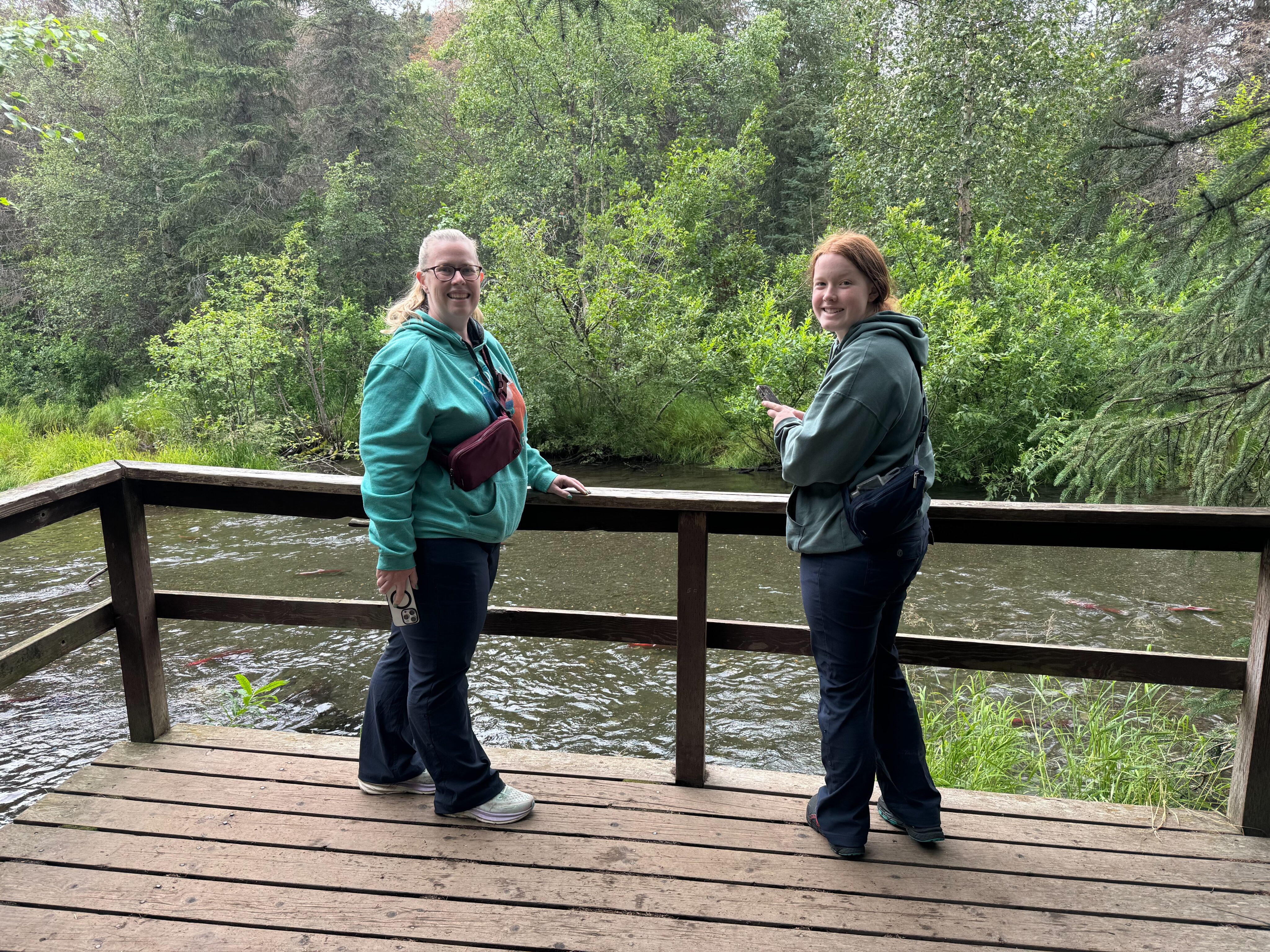
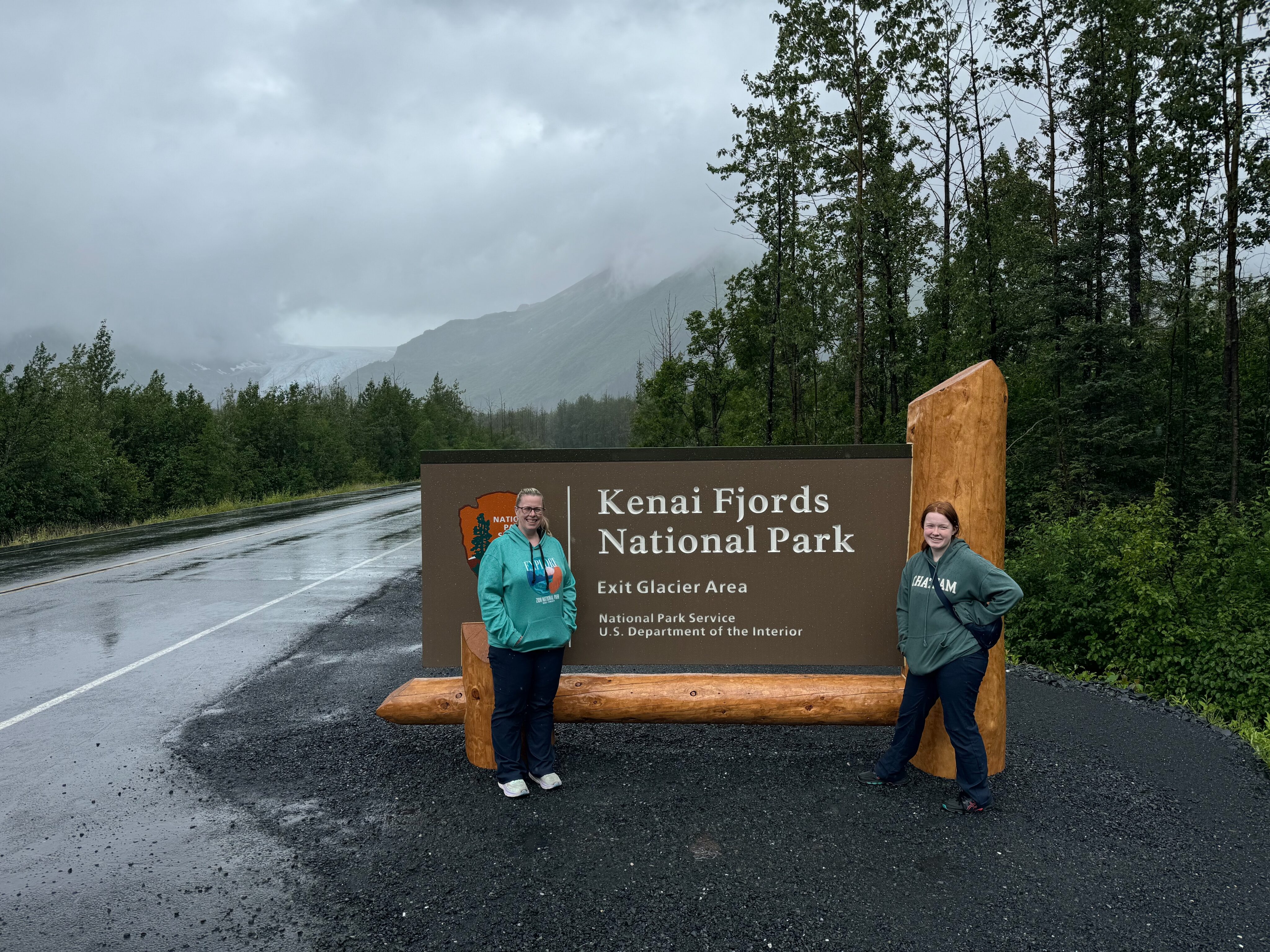
The Adventure
For the main part of our adventure, we enlisted the help of Alaskan Alpine Adventures, a guiding service that took care of everything, from bush flights to food, tents, and logistics. Without their experience, we wouldn’t have been able to navigate the backcountry of these rugged national parks.
Lake Clark National Park, located about 100 miles southwest of Anchorage, became a national monument in 1978 and gained full park status in 1980 through the Alaska National Interest Lands Conservation Act. The park protects over 4 million acres of pristine wilderness, including lakes, towering mountains, glaciers, tundra, rivers, rainforests, and coastline. It’s home to a wide variety of Alaskan wildlife. Due to its remote location, the park is accessible only by plane or boat.
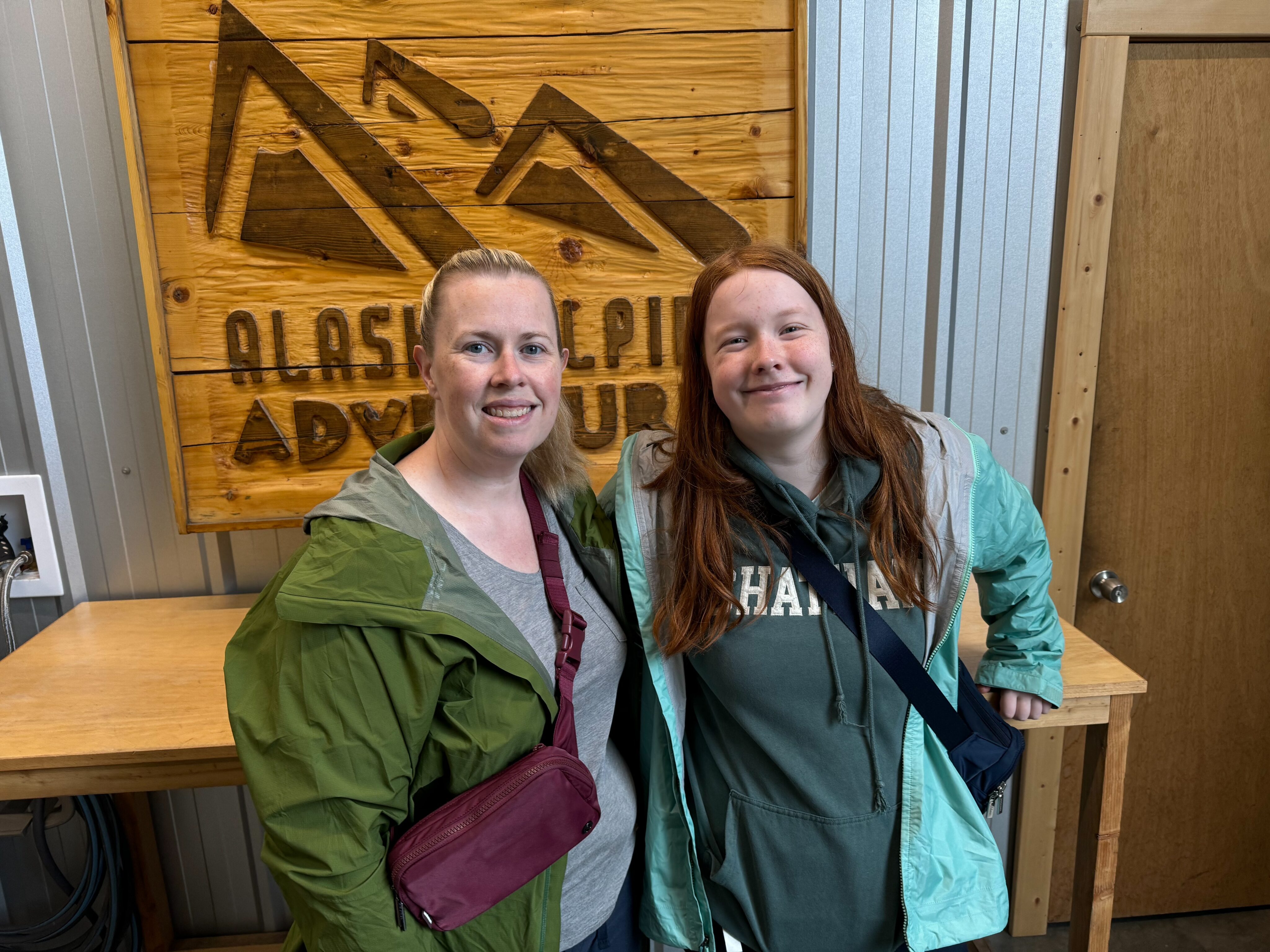
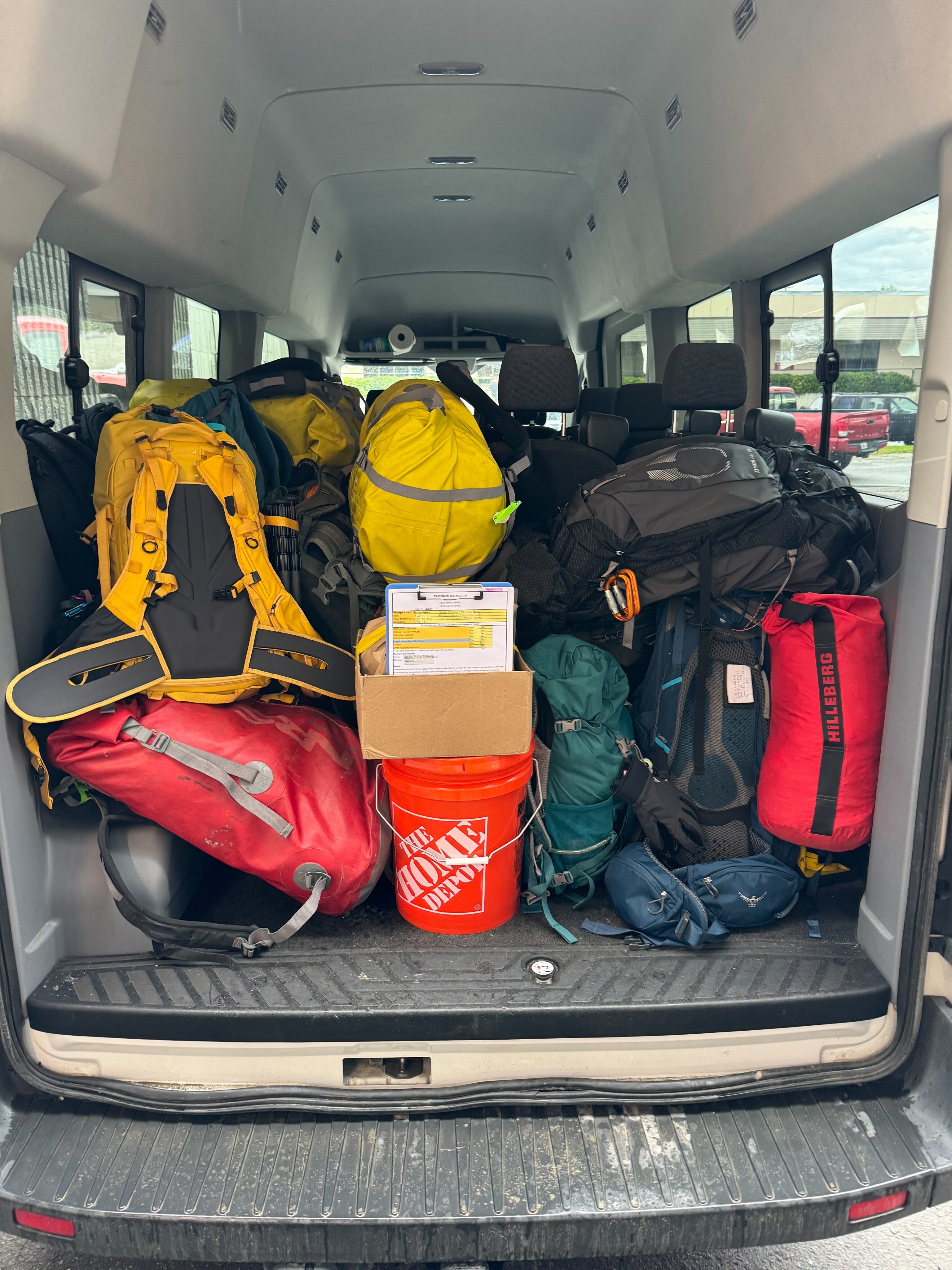

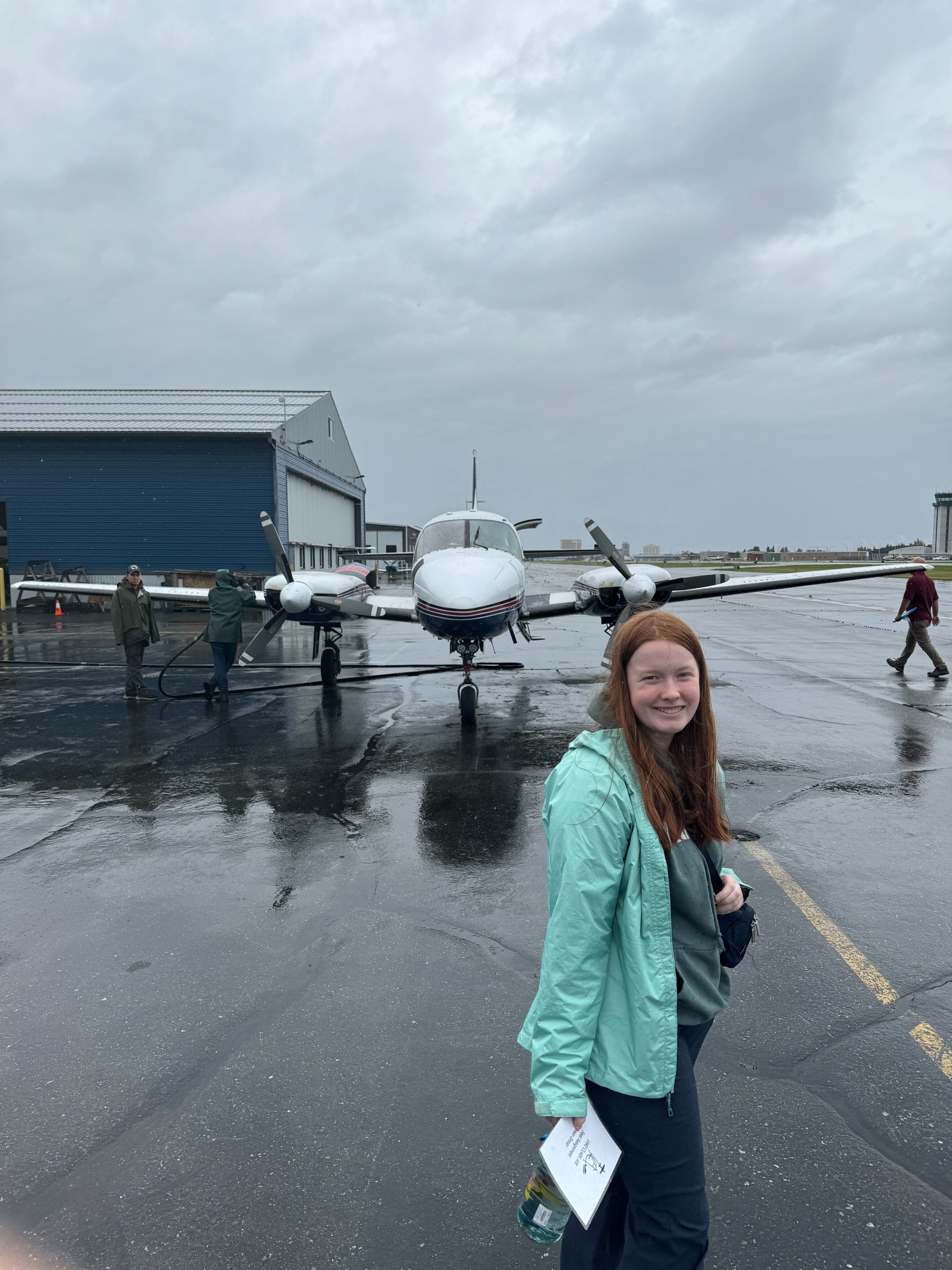
We partnered with Lake Clark Air, which operates out of Anchorage and also manages the main lodge in Port Alsworth, a small community within the park. Our journey began with an 8-person twin-turboprop plane from Anchorage to Lake Clark, where we had lunch before transferring to smaller float planes for our trip into Katmai National Park.
Port Alsworth
A small, remote community that serves as the main gateway to Lake Clark National Park. The village was founded in 1950 by Babe Alsworth, a bush pilot and homesteader who saw the potential for a lodge to serve park visitors and residents. Today, it remains a vital link for travelers and a base for adventure, offering accommodations, guided tours, and access to the park’s vast wilderness. The lodge we stayed at is part of the family legacy that continues to support park tourism. With its stunning location on the shores of Lake Clark, it’s a hub for exploring the area’s natural beauty.
Flying in small bush planes is an experience like no other. Lake Clark Air operates out of its own charming terminal in Anchorage, where they check your bags and weigh passengers to distribute weight evenly across the planes. We had to split into two groups because of space limitations. Normally, they fly through the famous Lake Clark Pass, one of the most scenic flights in Alaska, but weather forced us to take a different, more turbulent coastal route.
After landing on the gravel runway at Lake Clark, we had lunch at the Alsworth family lodge before dividing into smaller groups for our float plane flights into Katmai. Cami and I got to ride in the slightly large Beaver while Cat got a front row seat in the smaller Cessna.
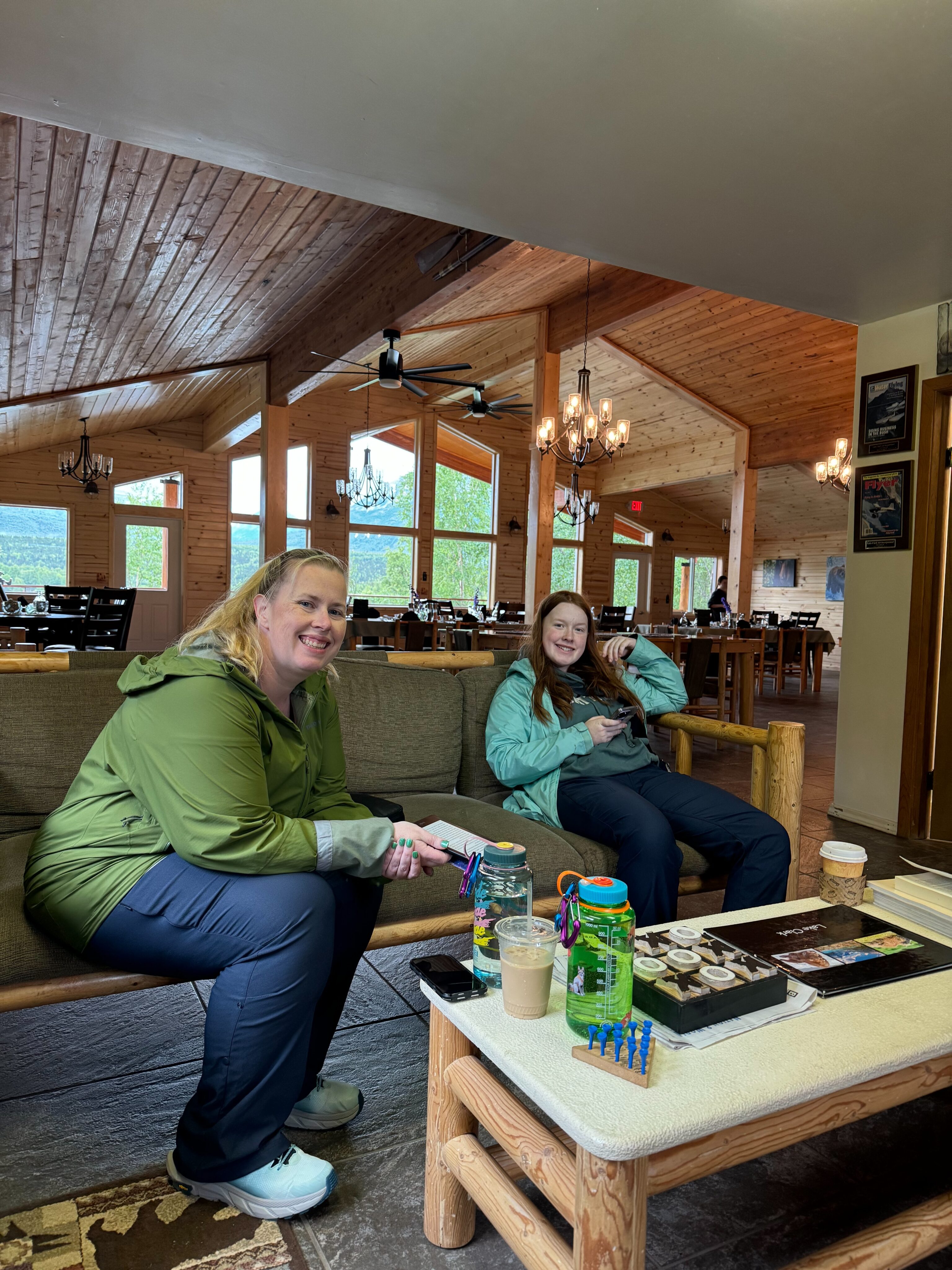

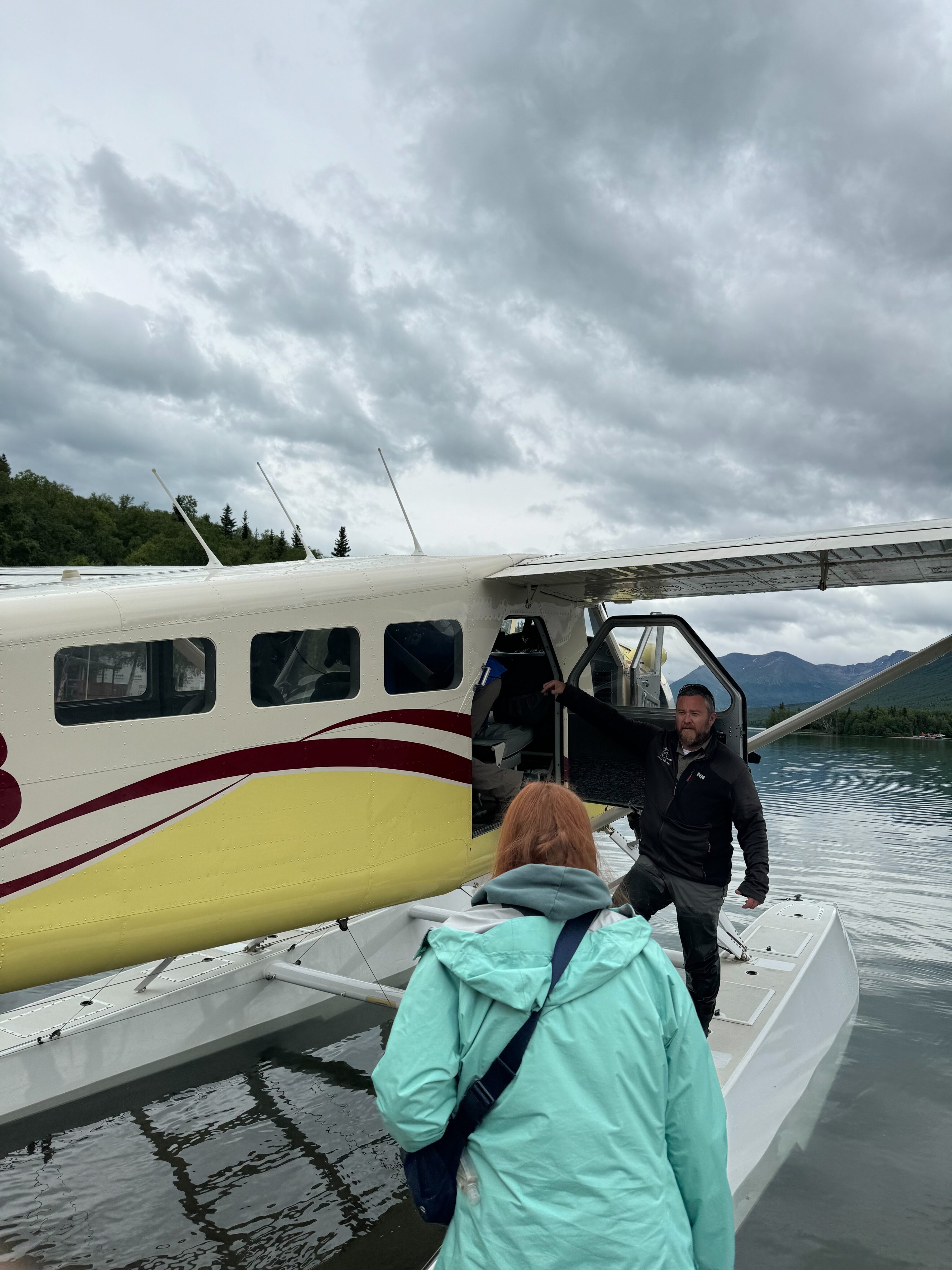

Katmai & Lake Clark National Park
Established in 1918, is best known for its volcanic landscape, created by the 1912 eruption of Novarupta. This eruption formed the Valley of Ten Thousand Smokes, a dramatic and barren area of steaming vents and ash fields. However, Katmai’s most famous residents are its brown bears. Every summer, bears gather in large numbers to feast on the salmon that run through its rivers, particularly at Brooks Falls, where photographers from all over the world capture iconic images of these massive creatures fishing in the rapids.
We flew into Crosswinds Lake in the northern part of the park, which feeds into Funnel Creek. This area is known for its dense salmon runs and abundant bears. Cami and I were on the first plane, along with the majority of the camping gear. One of our guides scouted the area for a good camping spot, and once the second plane arrived, we started setting up camp.
I was initially worried about traveling with my 40 pounds of camera gear, but the folks at Lake Clark Air were incredibly careful, even stowing my bag next to the pilot’s own camera equipment.
This was our family’s first true backcountry camping experience. Everyone pitched in to set up tents, a bear fence, and a large cooking tent. Despite the weather delays, we were treated to an amazing meal and incredible views of the Alaskan wilderness.
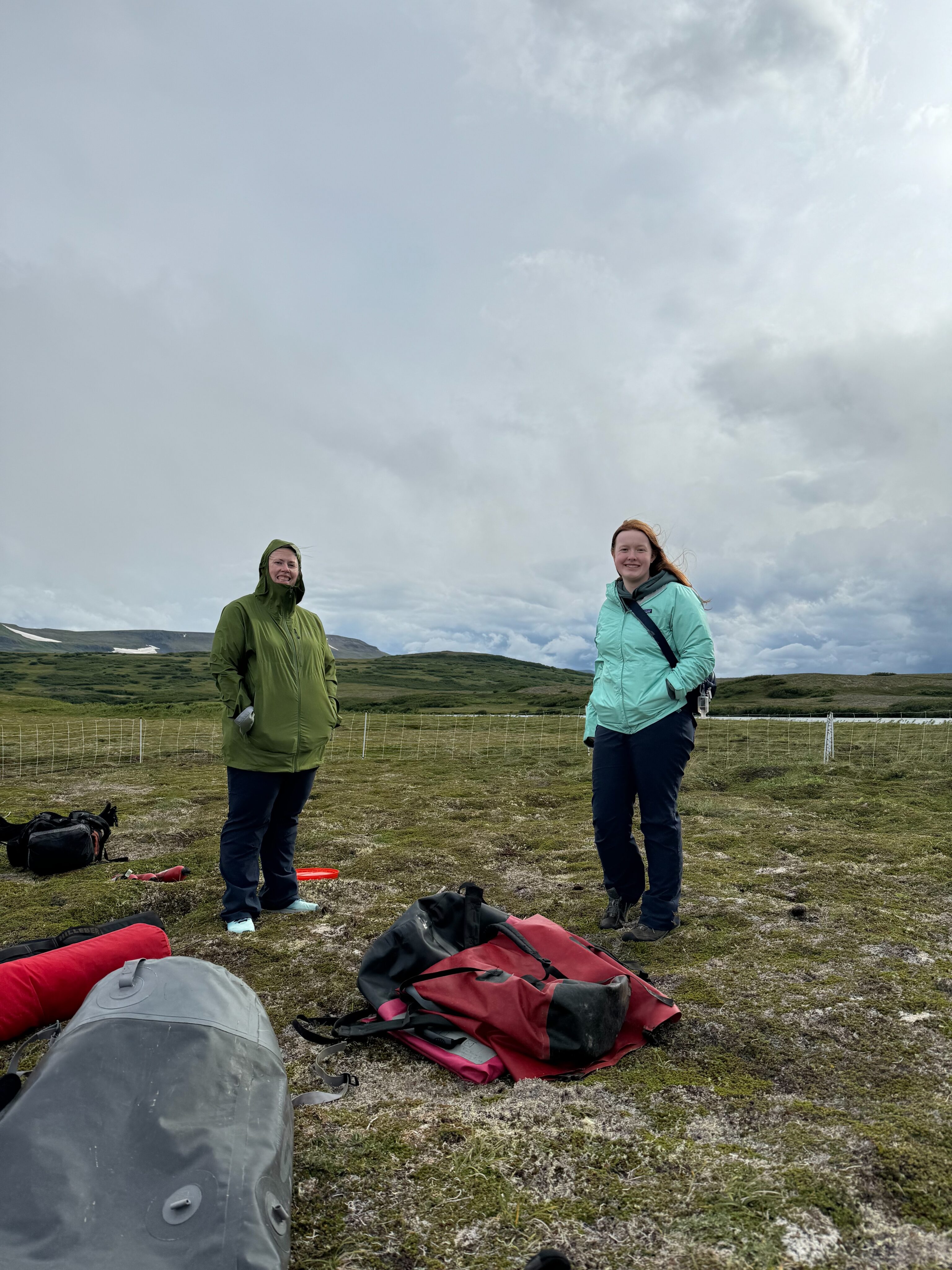
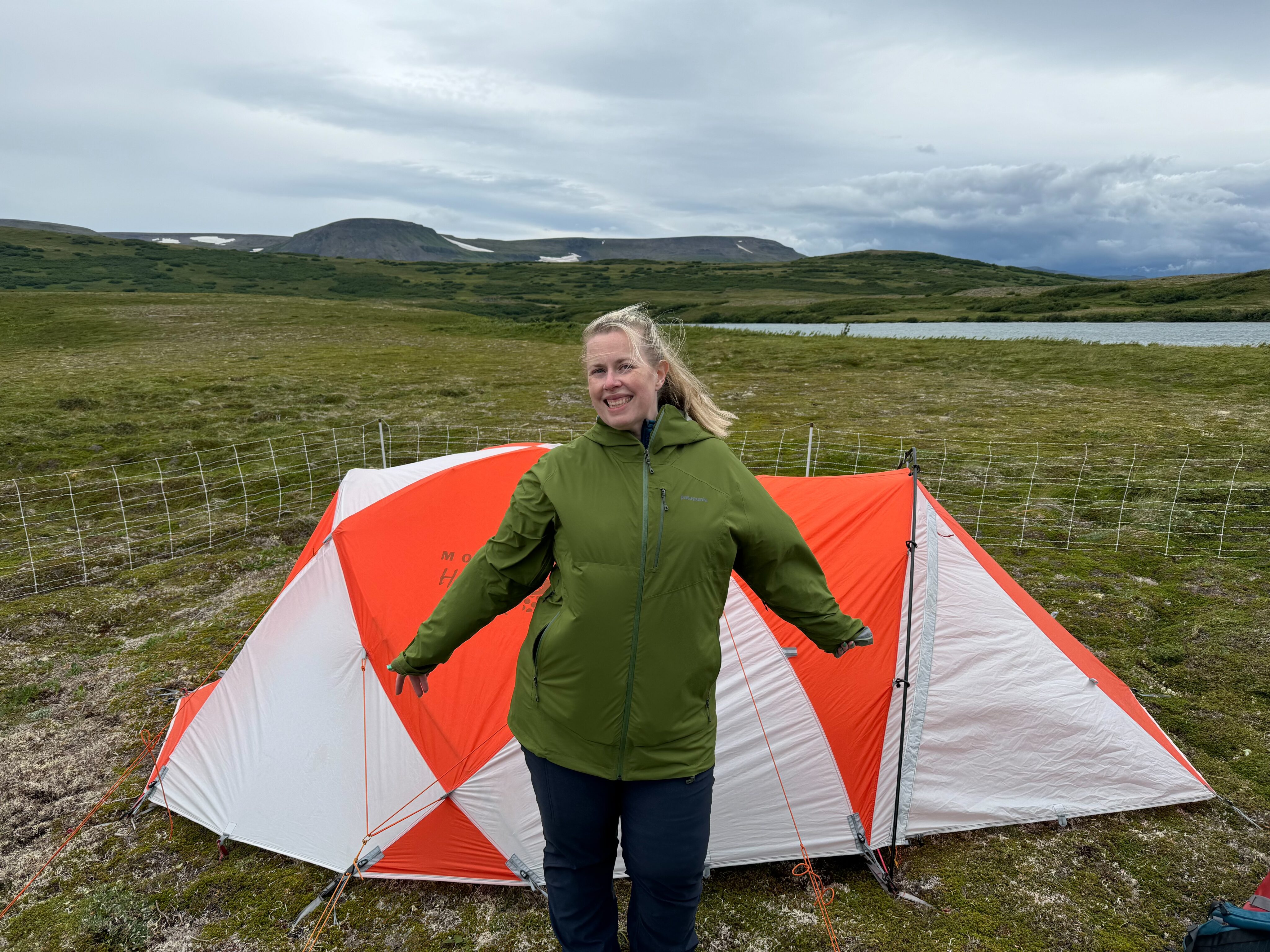
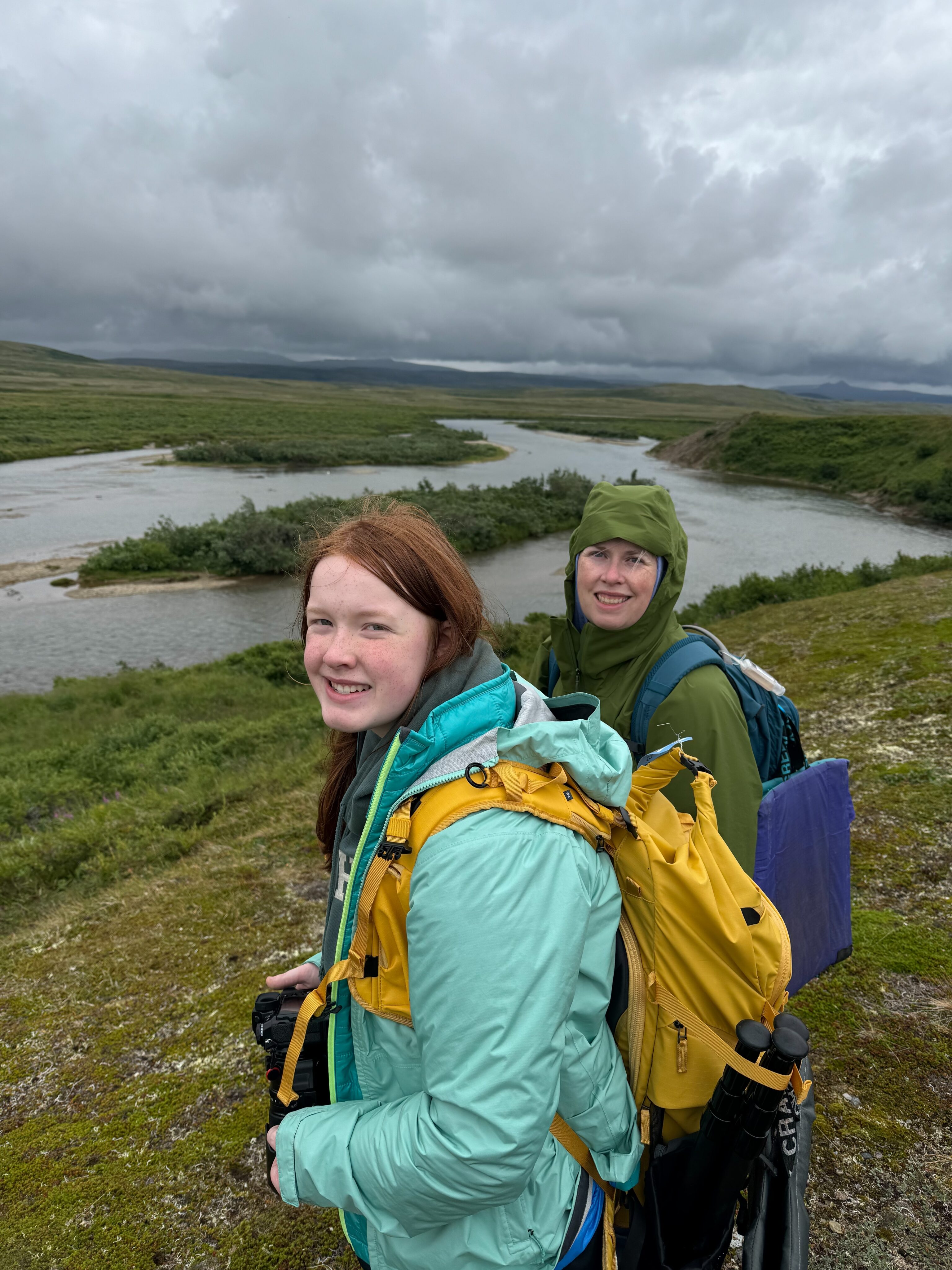
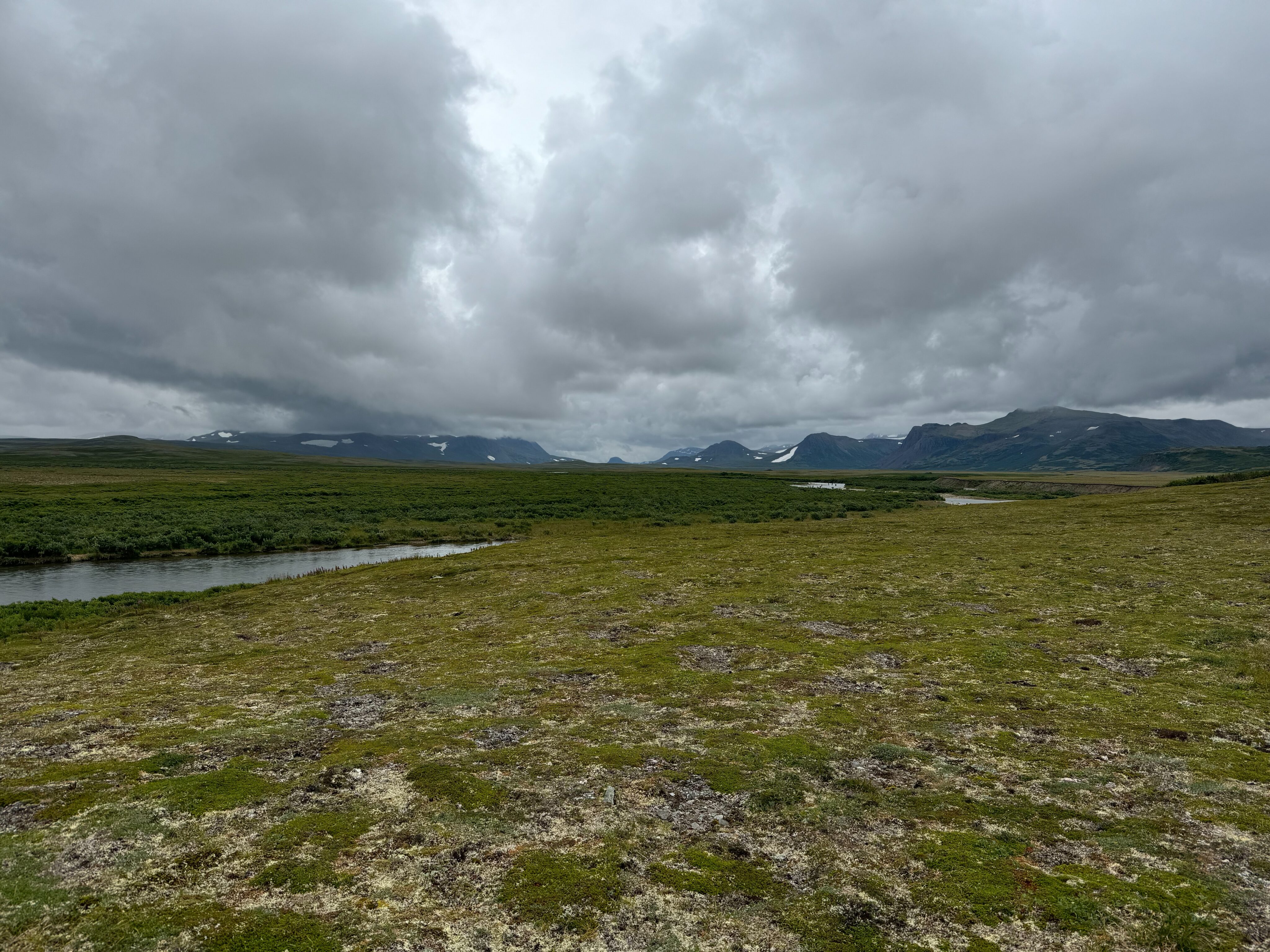
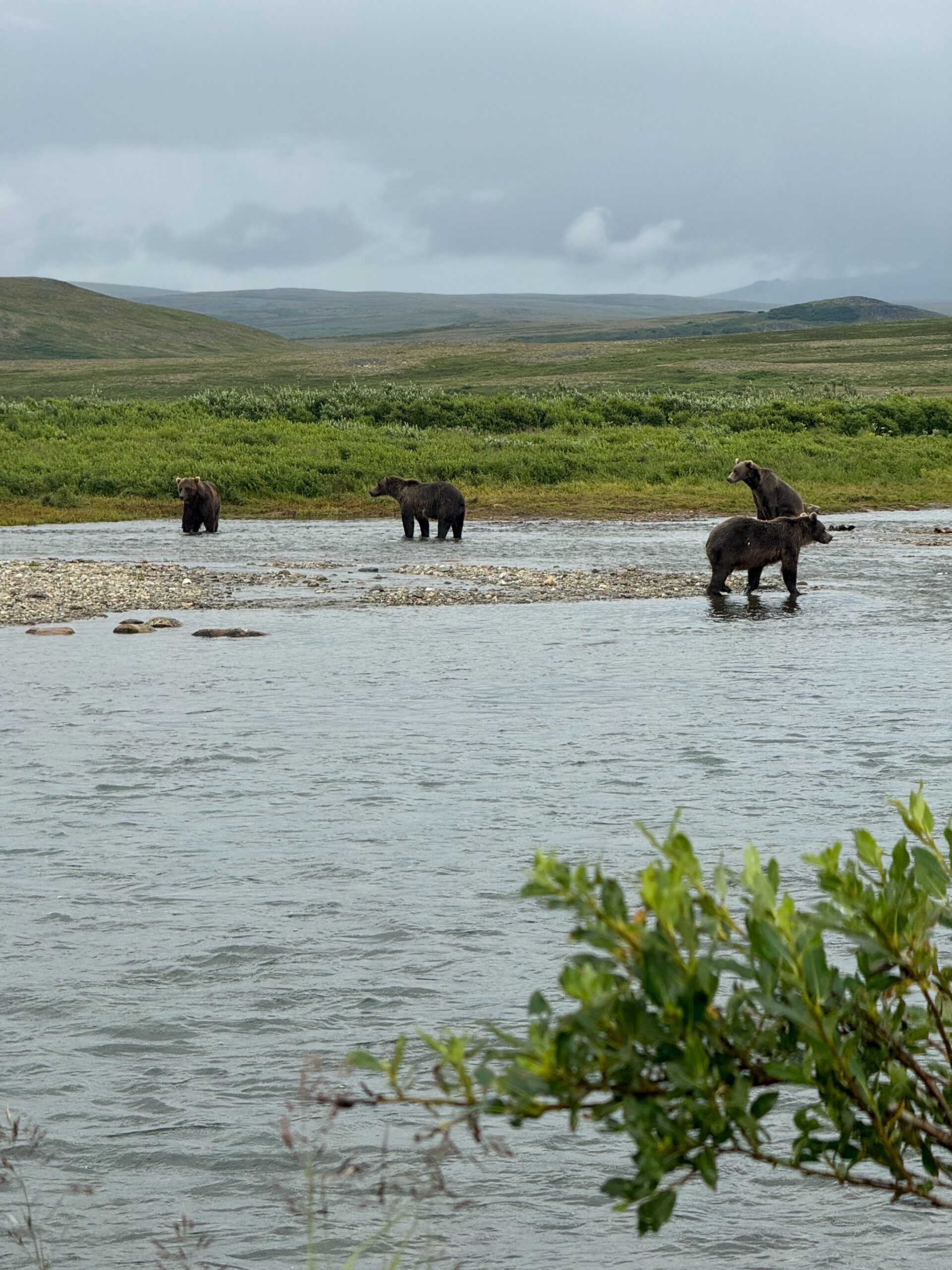
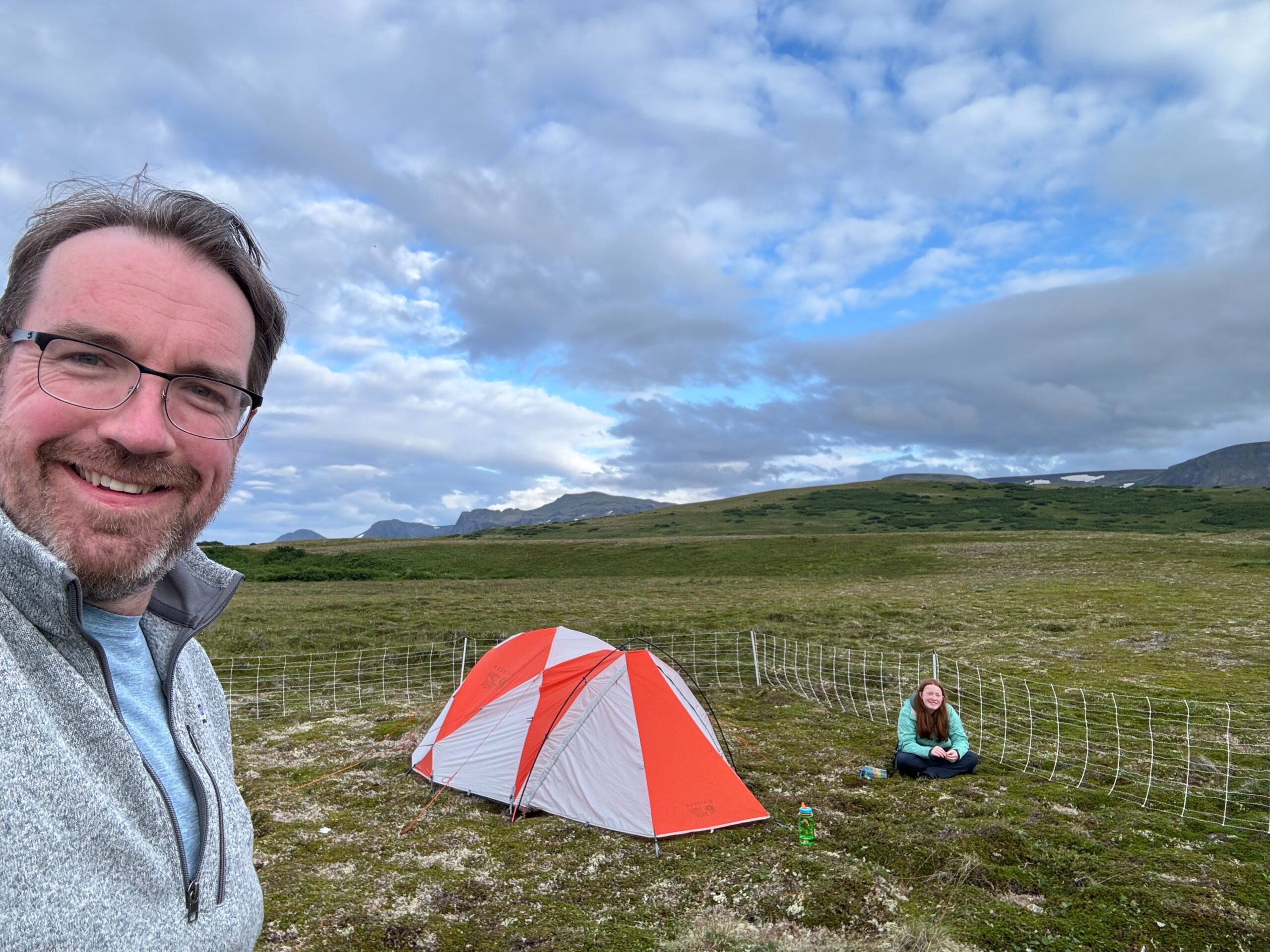
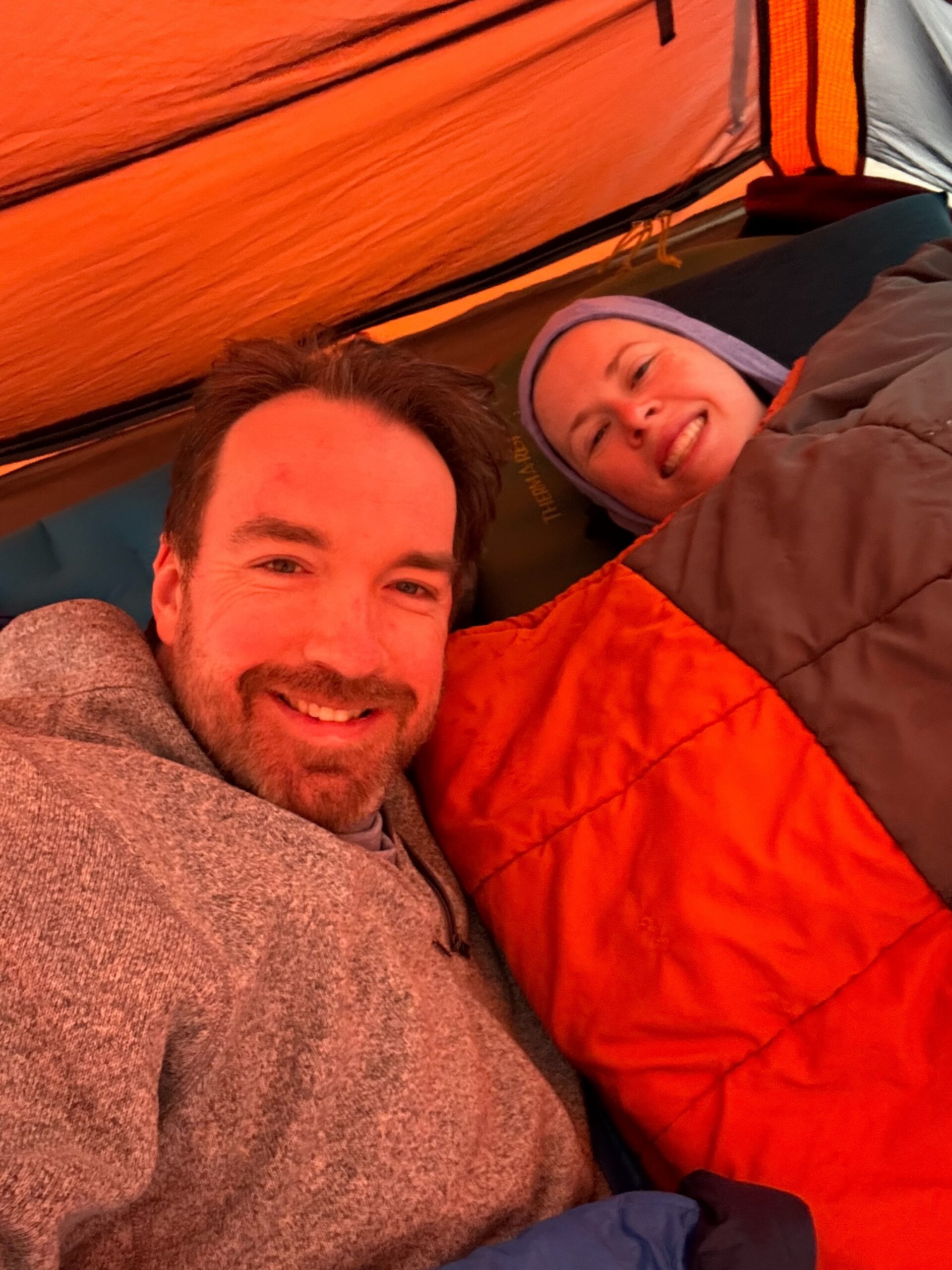
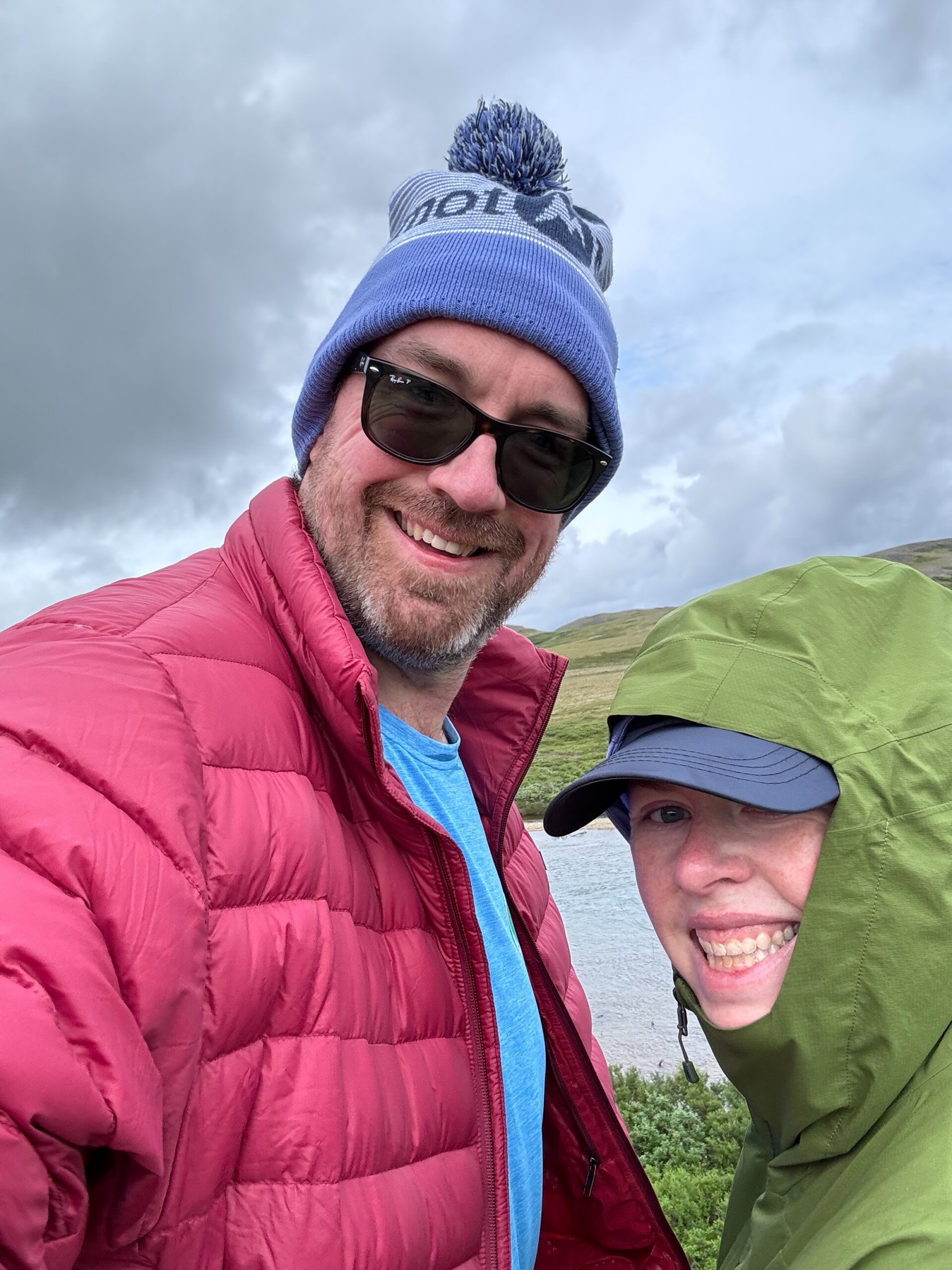
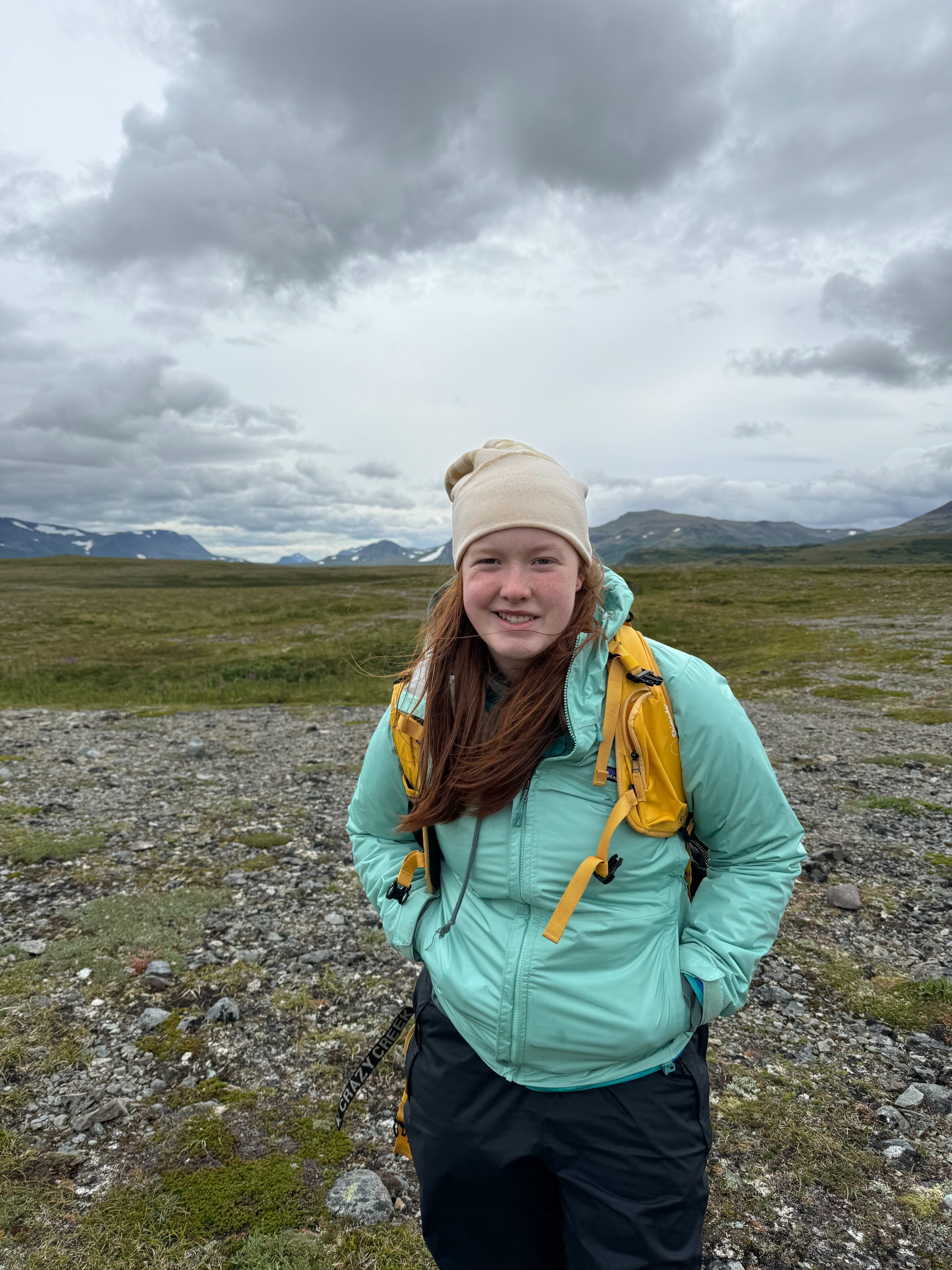



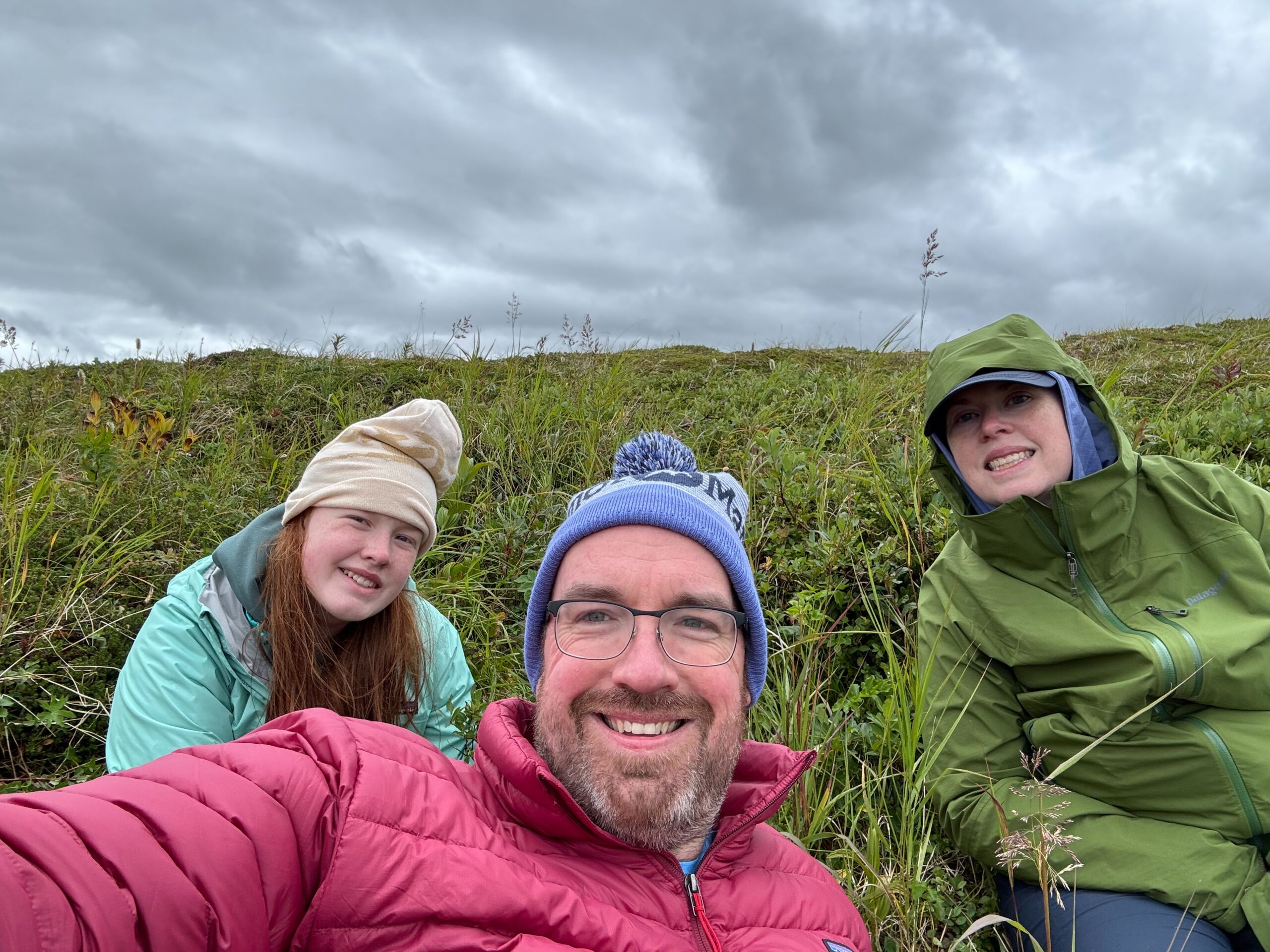
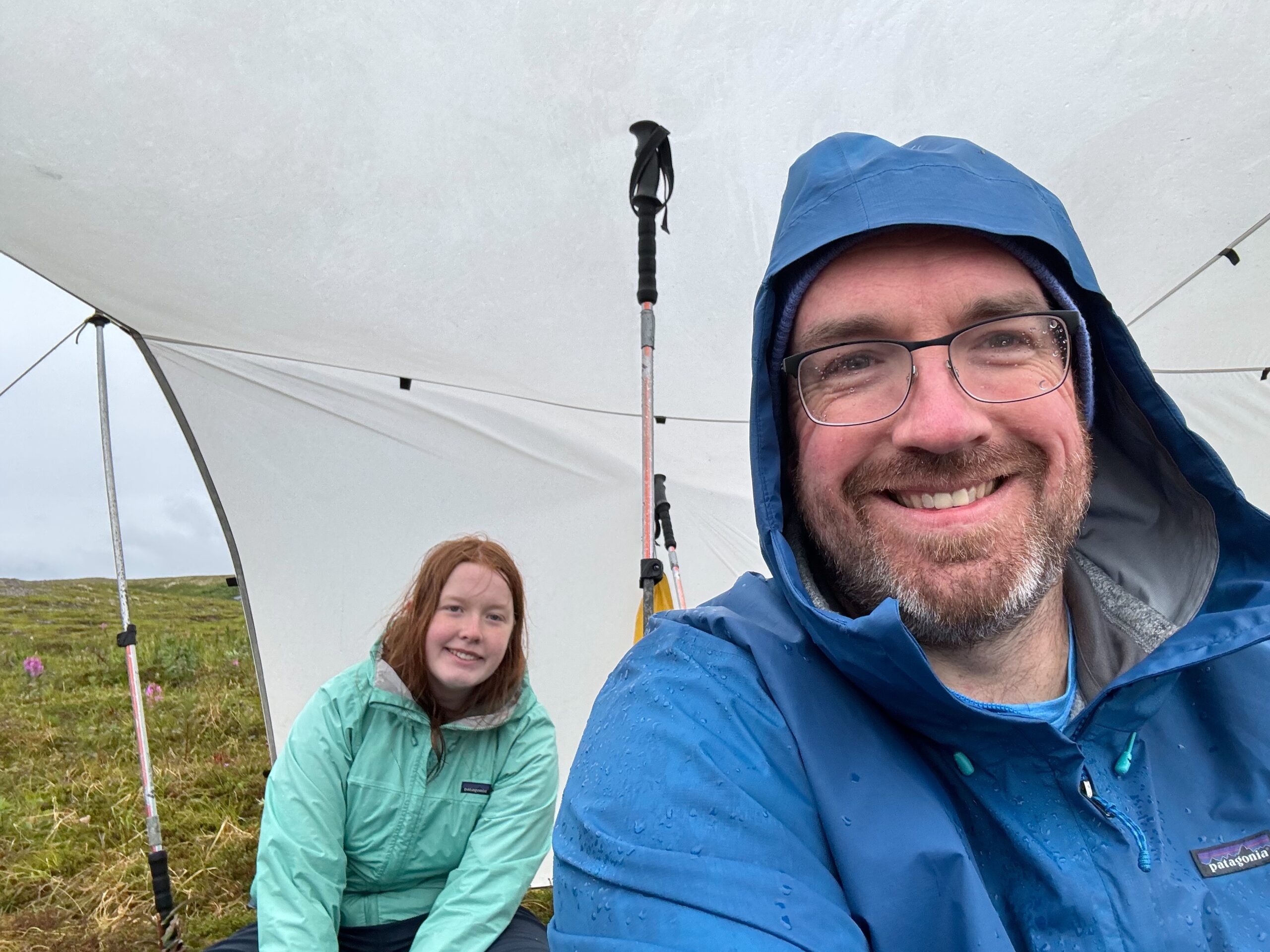
Over the next few days, we explored the Funnel Creek area, hiking across challenging tundra, sometimes firm and other times sinking underfoot. We averaged about 8 to 10 miles of hiking each day, encountering bears up close. These majestic creatures were more focused on the plentiful salmon than on us. The sheer abundance of fish was astonishing; at times, the river would turn red with massive schools of salmon.
Though the weather was classic Alaskan—wet and cold—we didn’t let it dampen our spirits. Our guides prepared delicious meals and helped make the entire experience enjoyable.
When it was time to leave, we woke to 40-degree temperatures, rain, and wind. The planes couldn’t take us all at once, so they ferried us in groups back to a larger lake. After some delays, we eventually made our way back to the lodge in Lake Clark. This all seemed very common place to our crew but was all a very new experience for us.
On our final day at Lake Clark, we stayed in cabins along the lakefront. The small but dedicated community of Port Alsworth is home to a handful of residents year-round, and we even found a food truck a mile from our lodge for a fantastic lunch. We finished our day with dinner at the main lodge, reminiscing about our adventures.
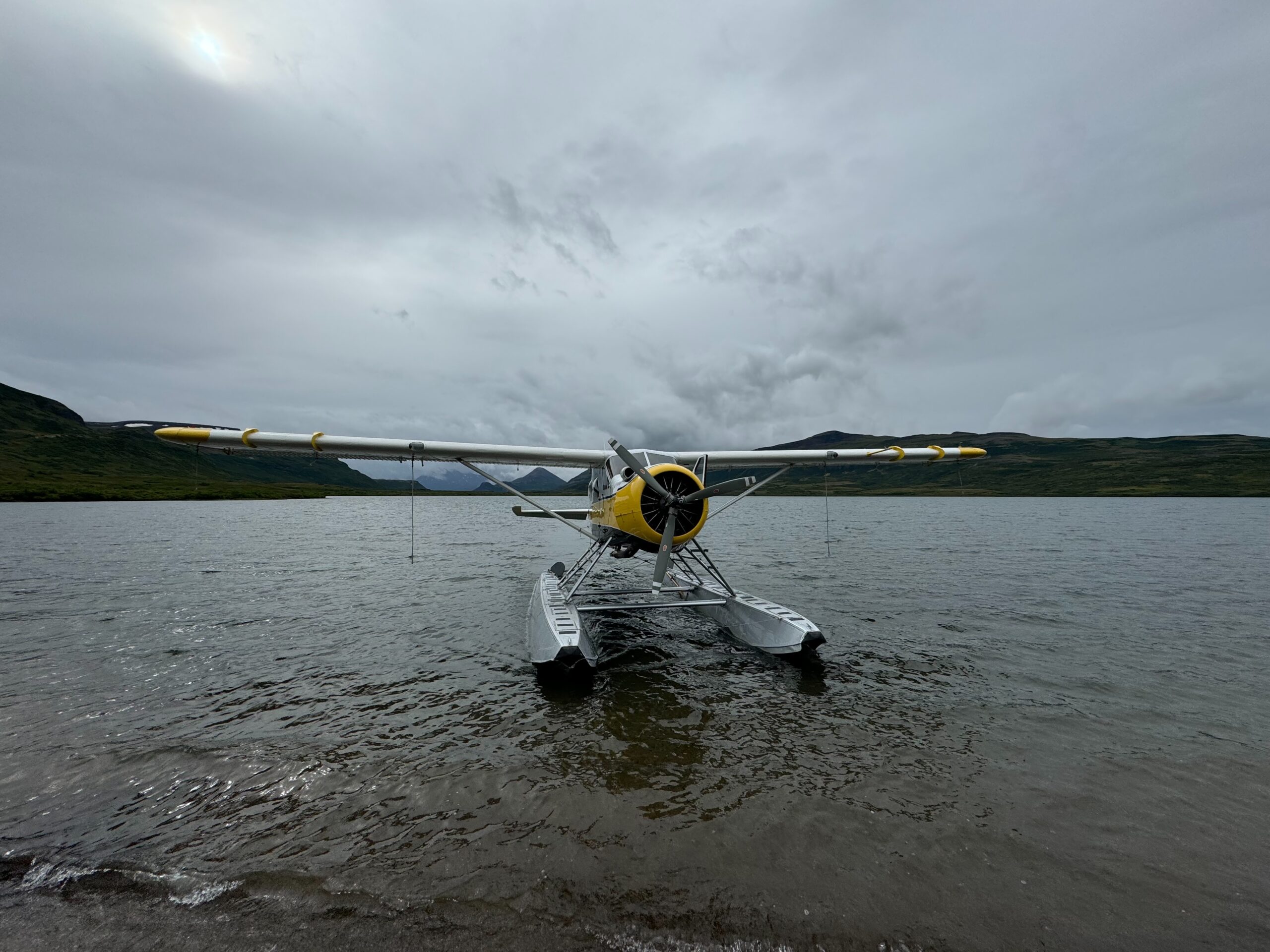
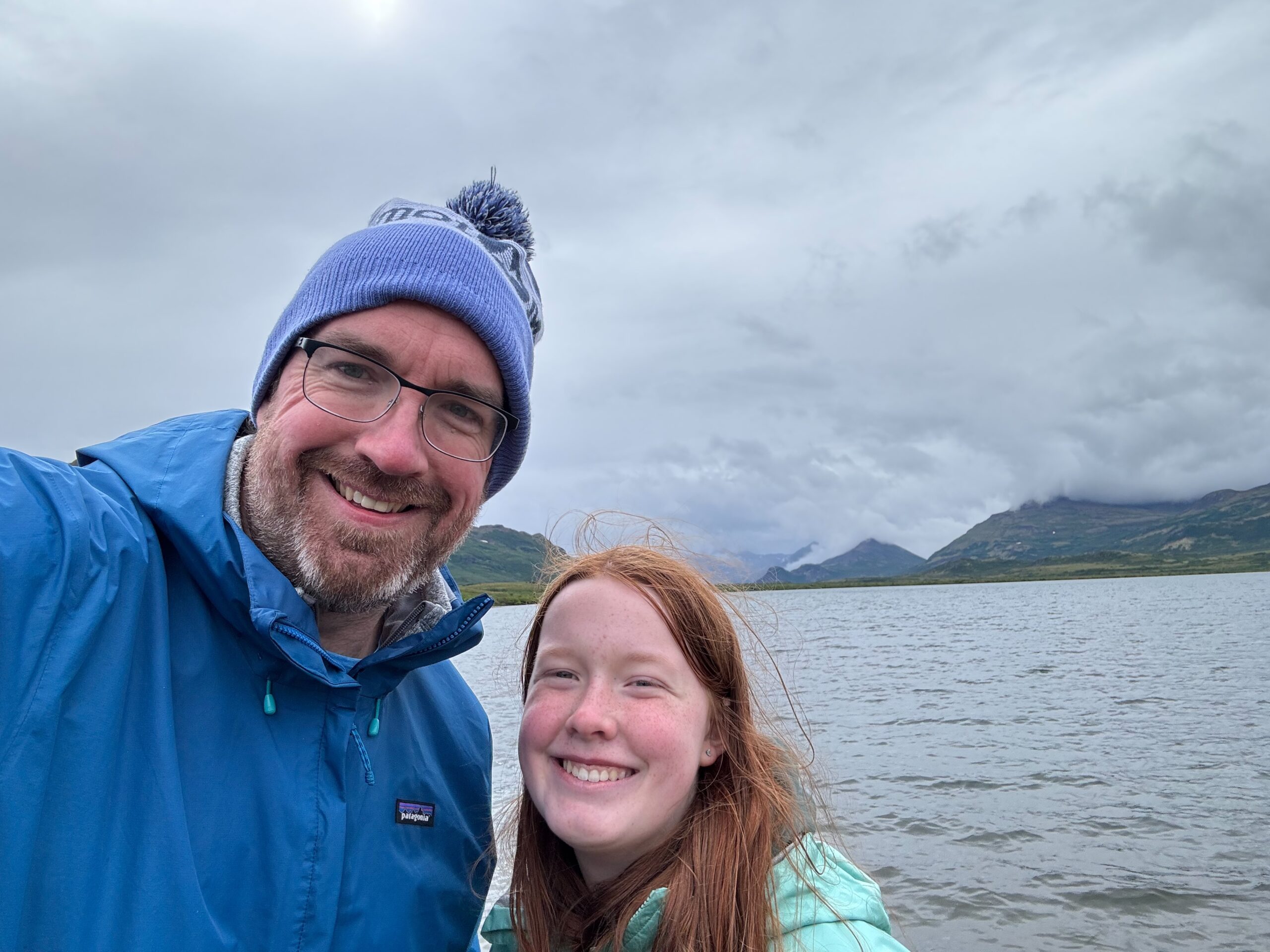
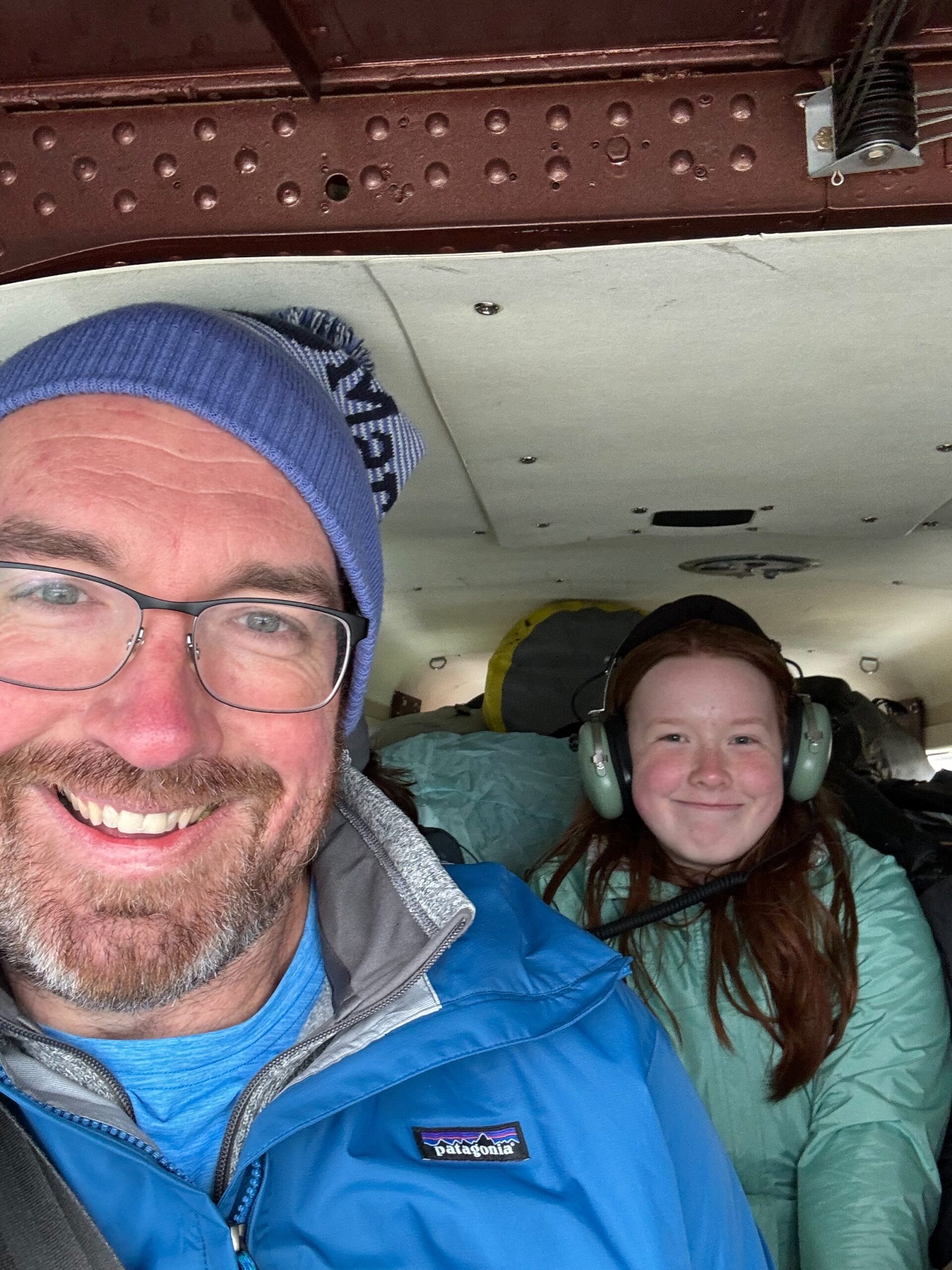
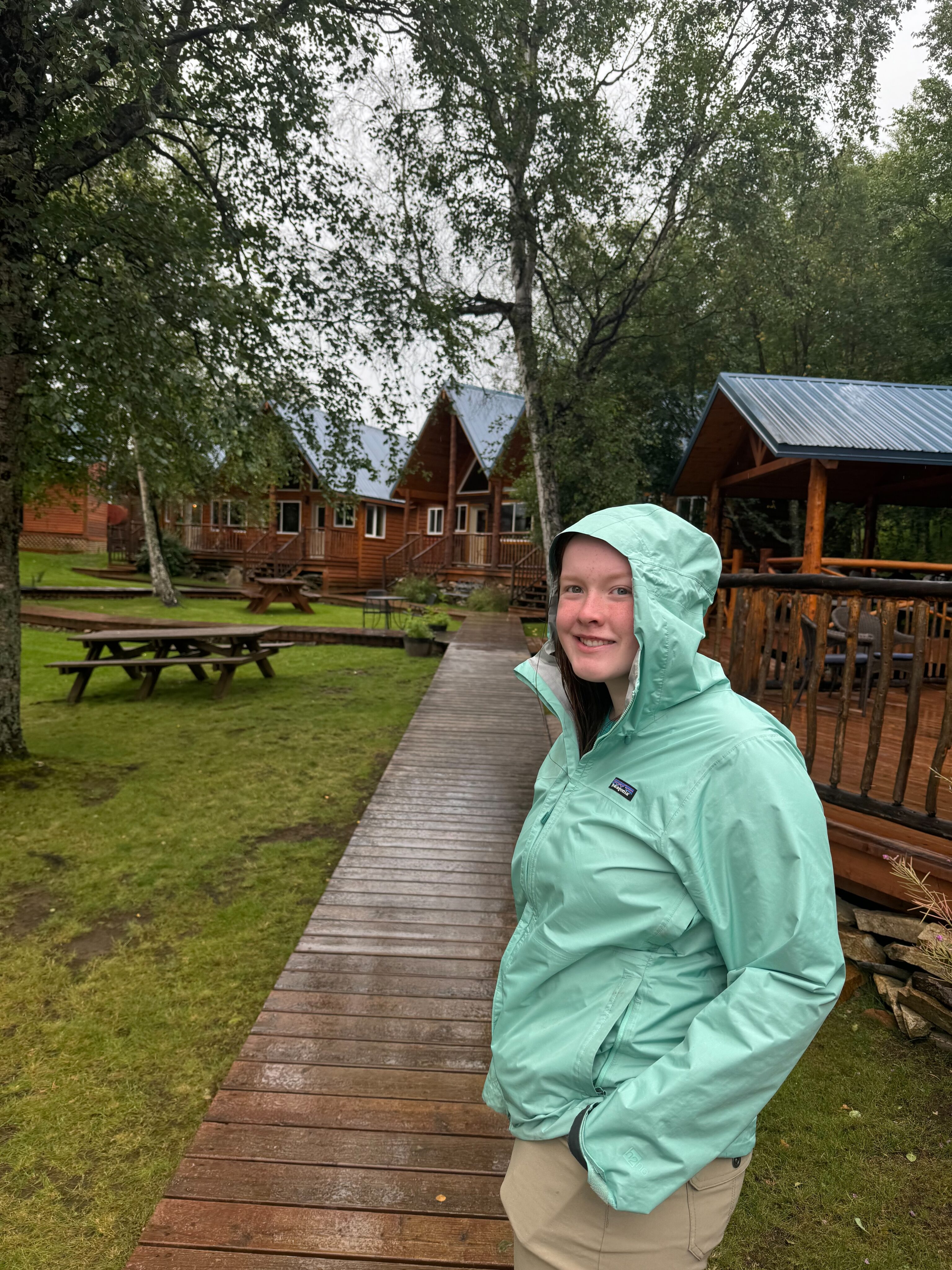
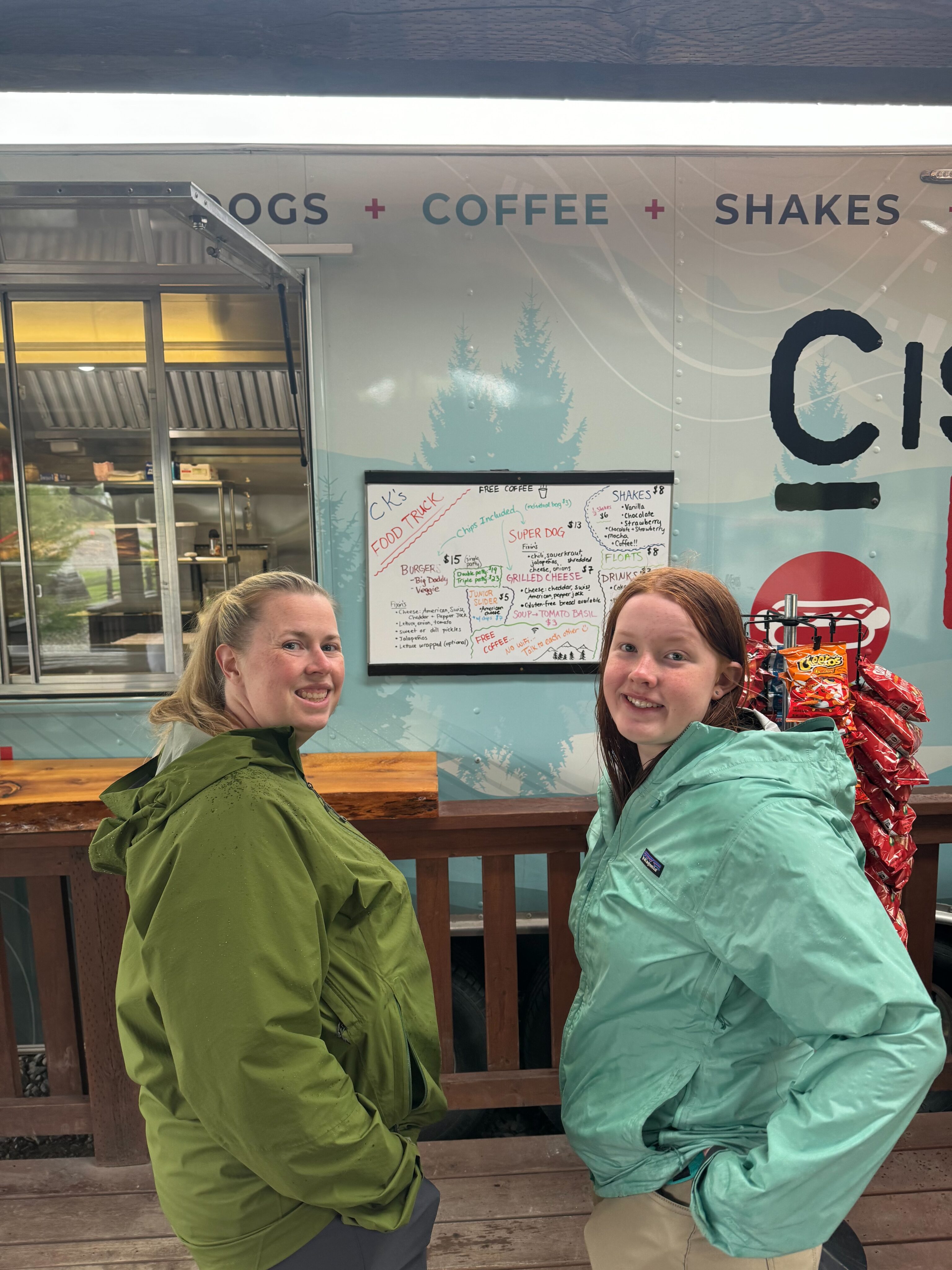
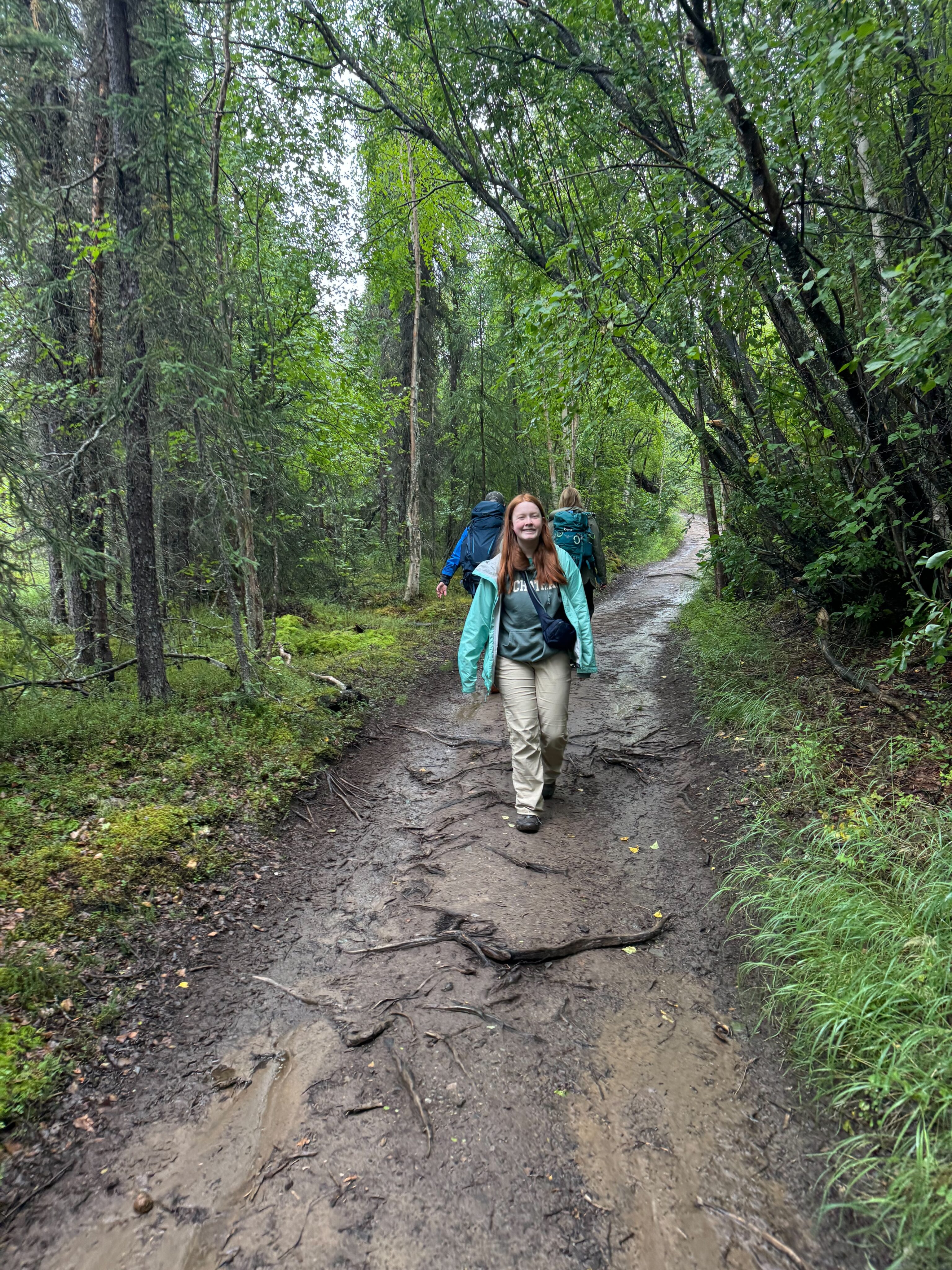
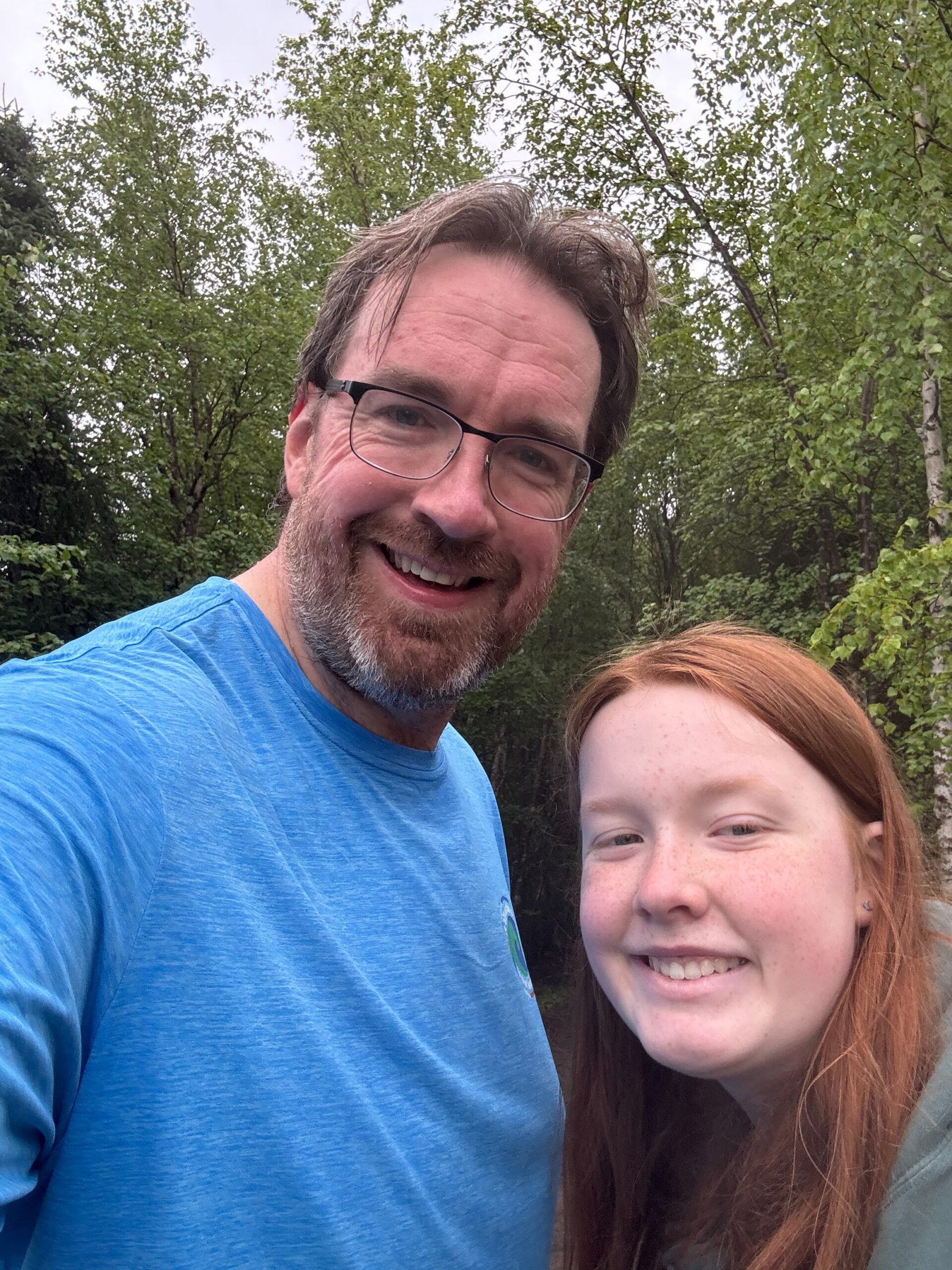
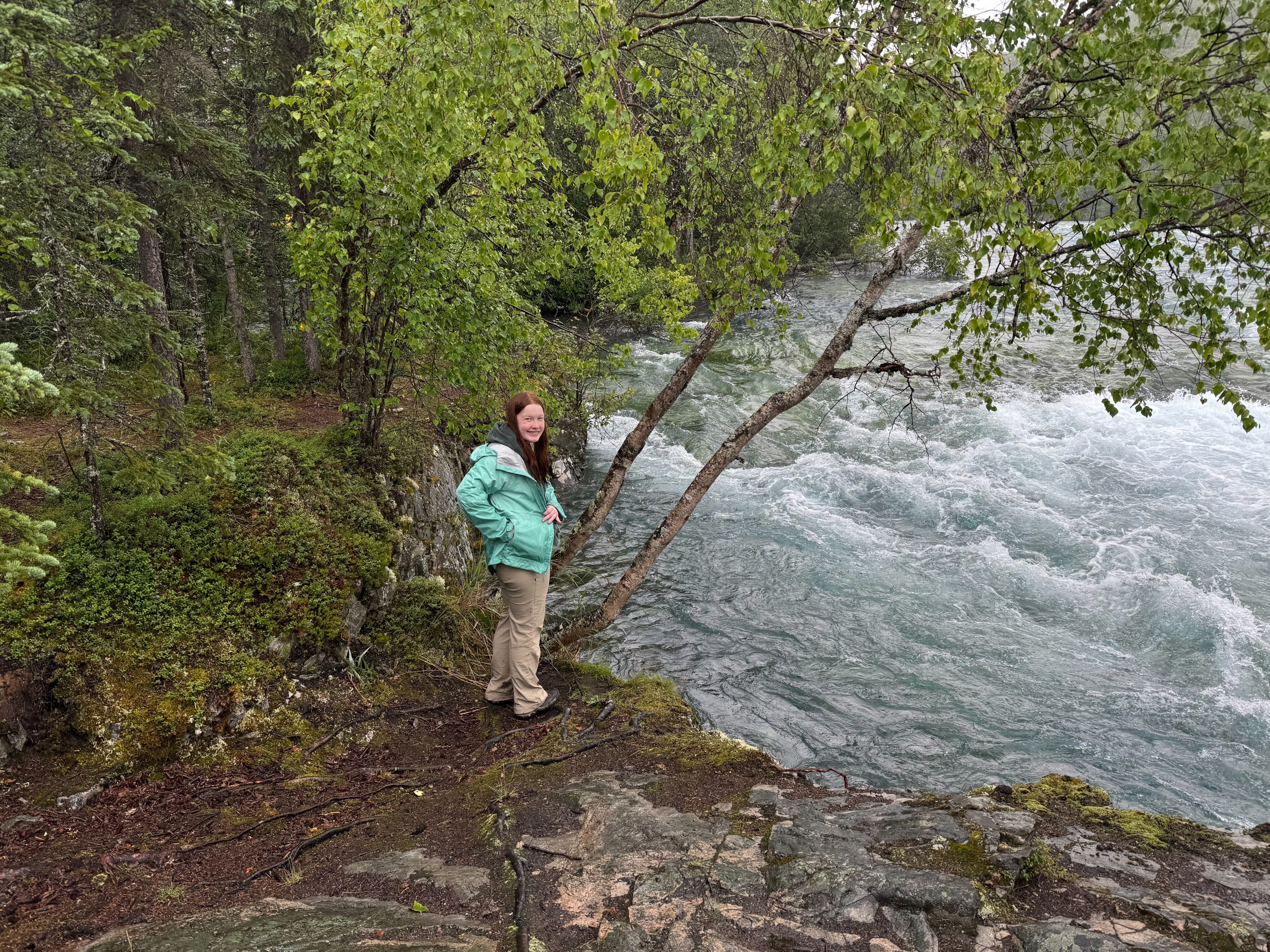
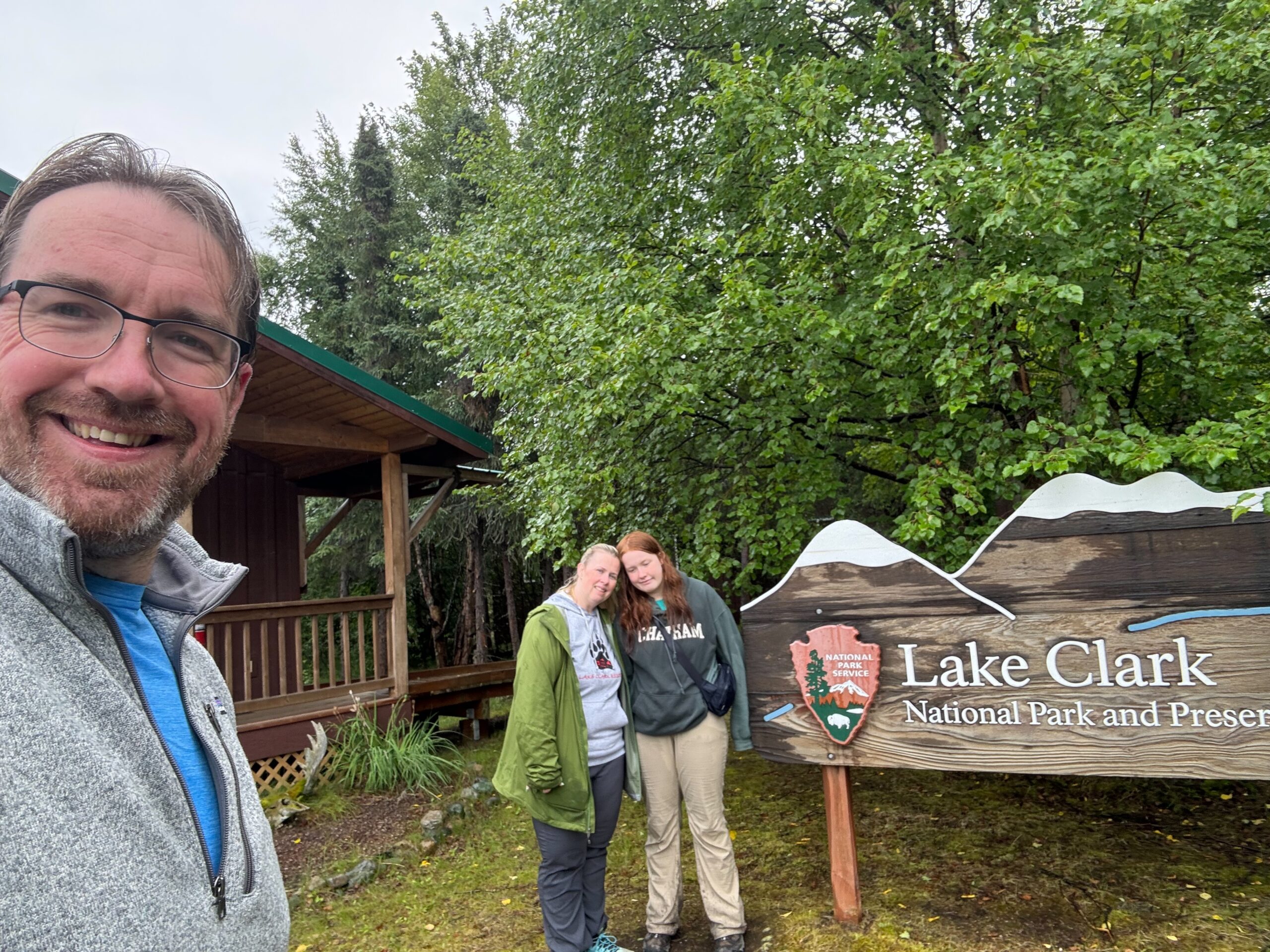
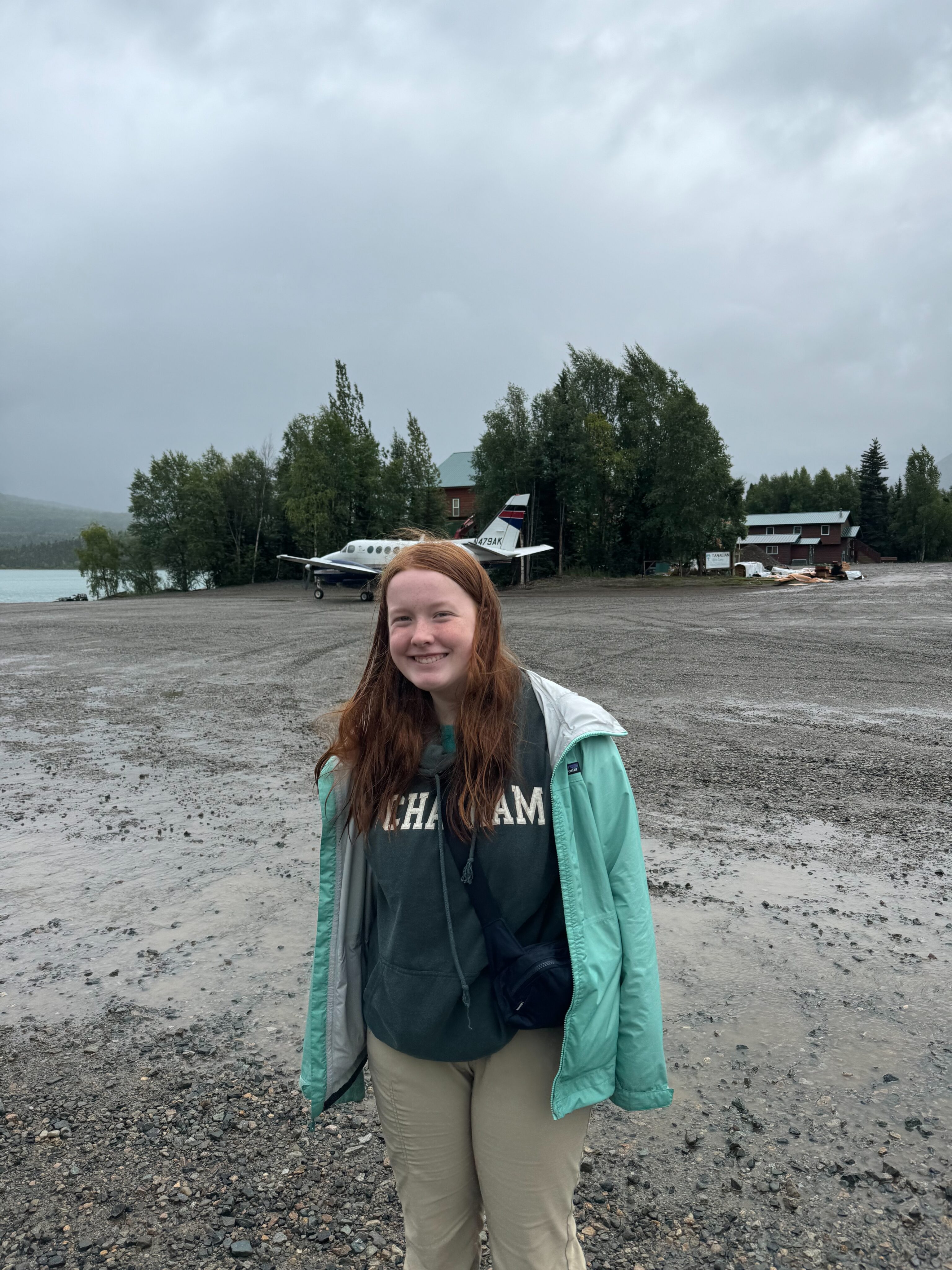
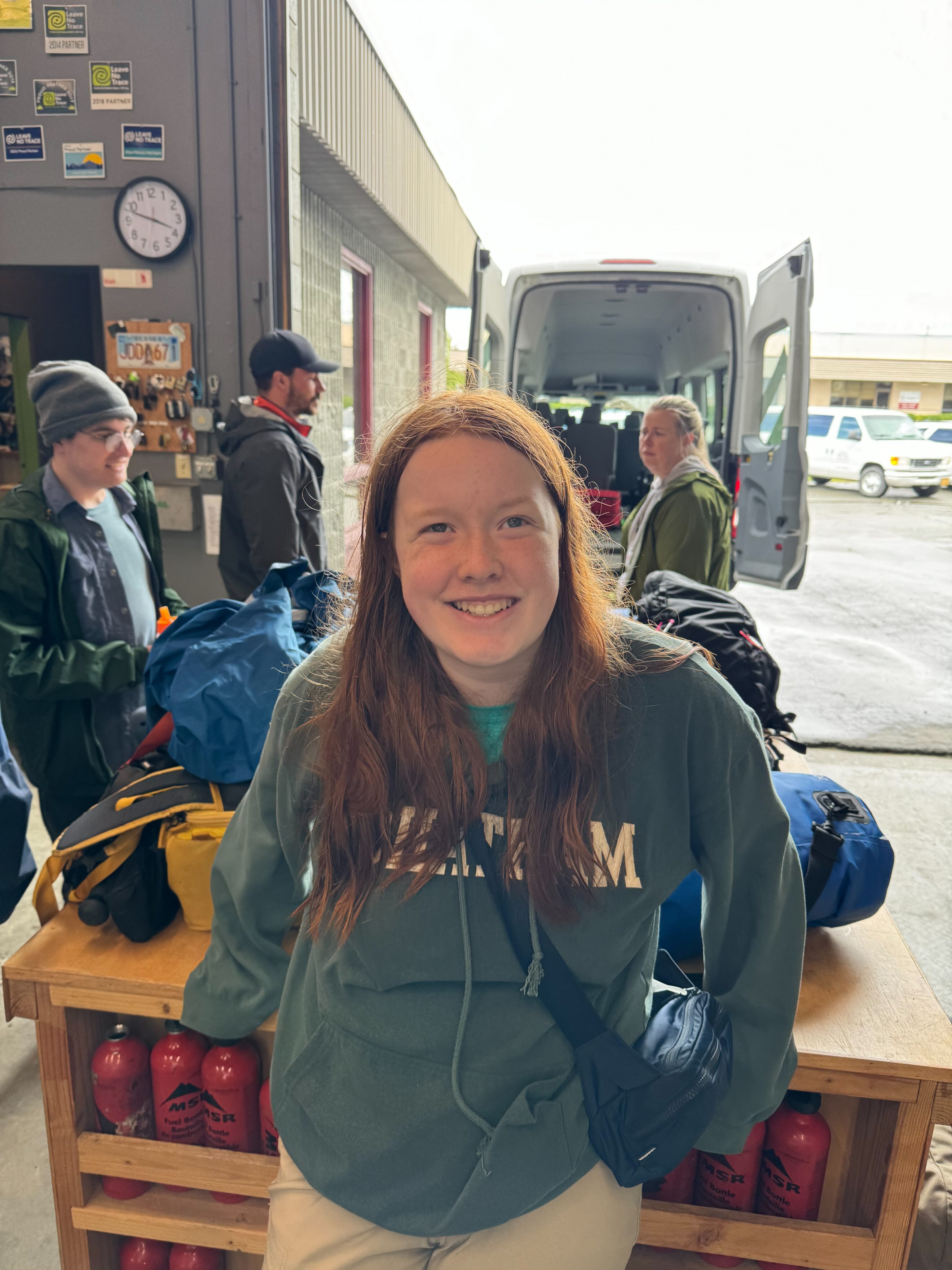
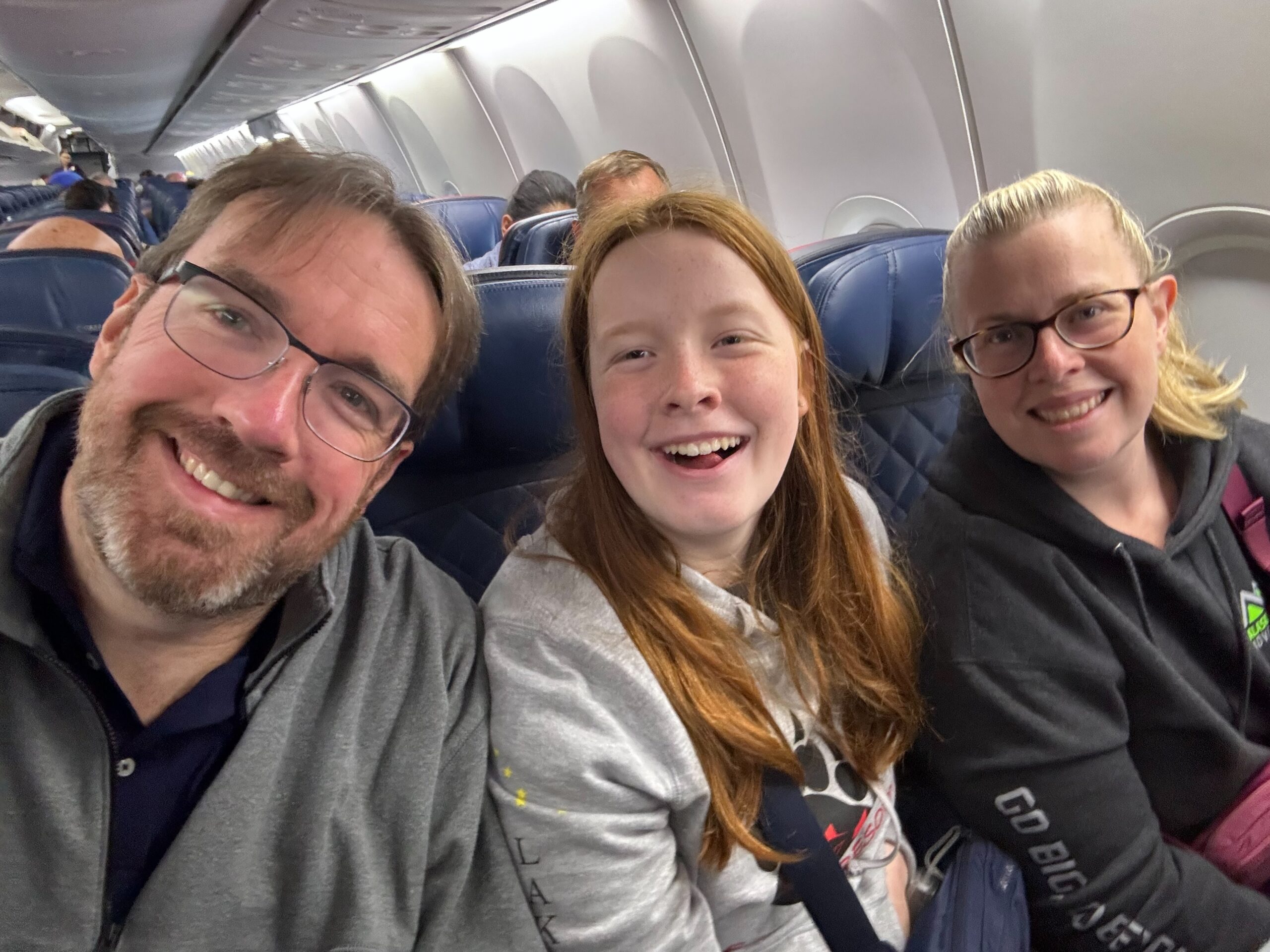
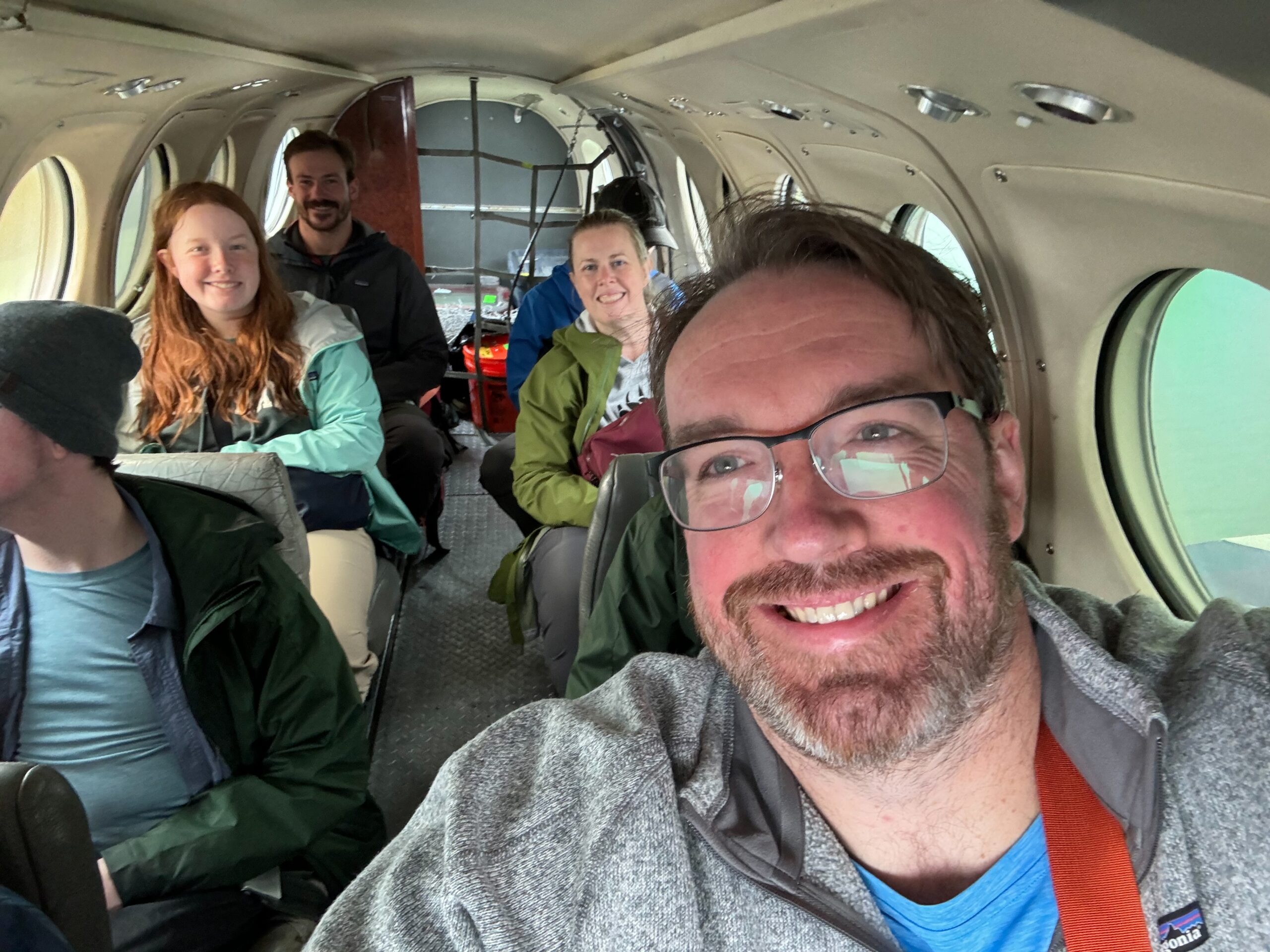
The next day, we hiked out of town and into the national park, where we were treated to stunning waterfalls and wilderness. Unfortunately, halfway through the hike, freezing rain cut it short. We finished the hike at the Lake Clark Visitor Center before returning to the airfield for our flight back to Anchorage.
Luckily, the weather cooperated, and this time we were able to fly through Lake Clark Pass. The views of towering mountains flanking the lake were unforgettable and will stay with me for a lifetime.


